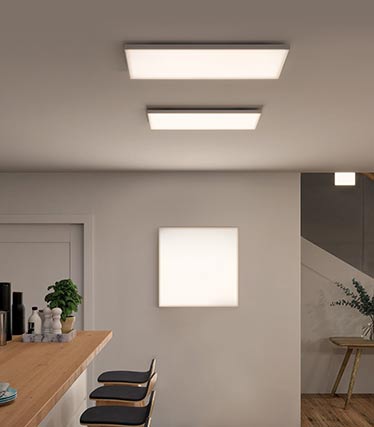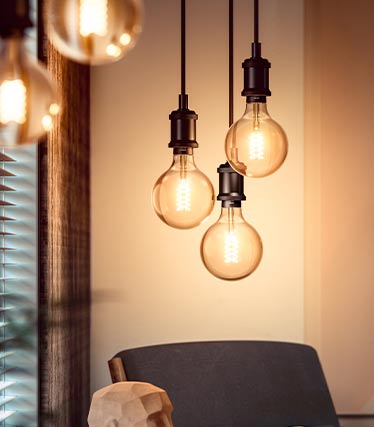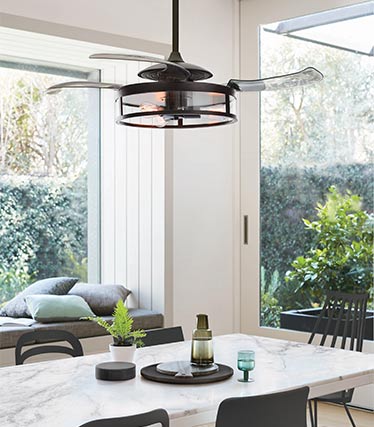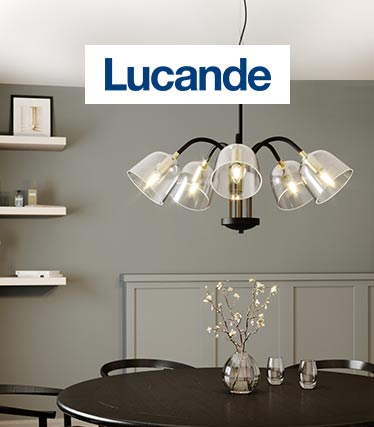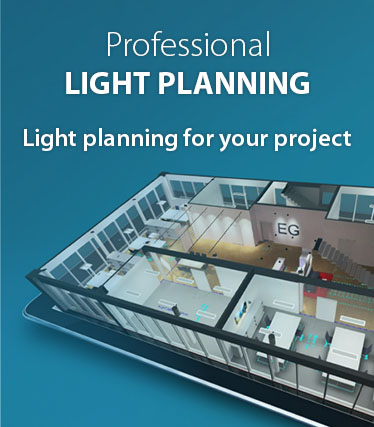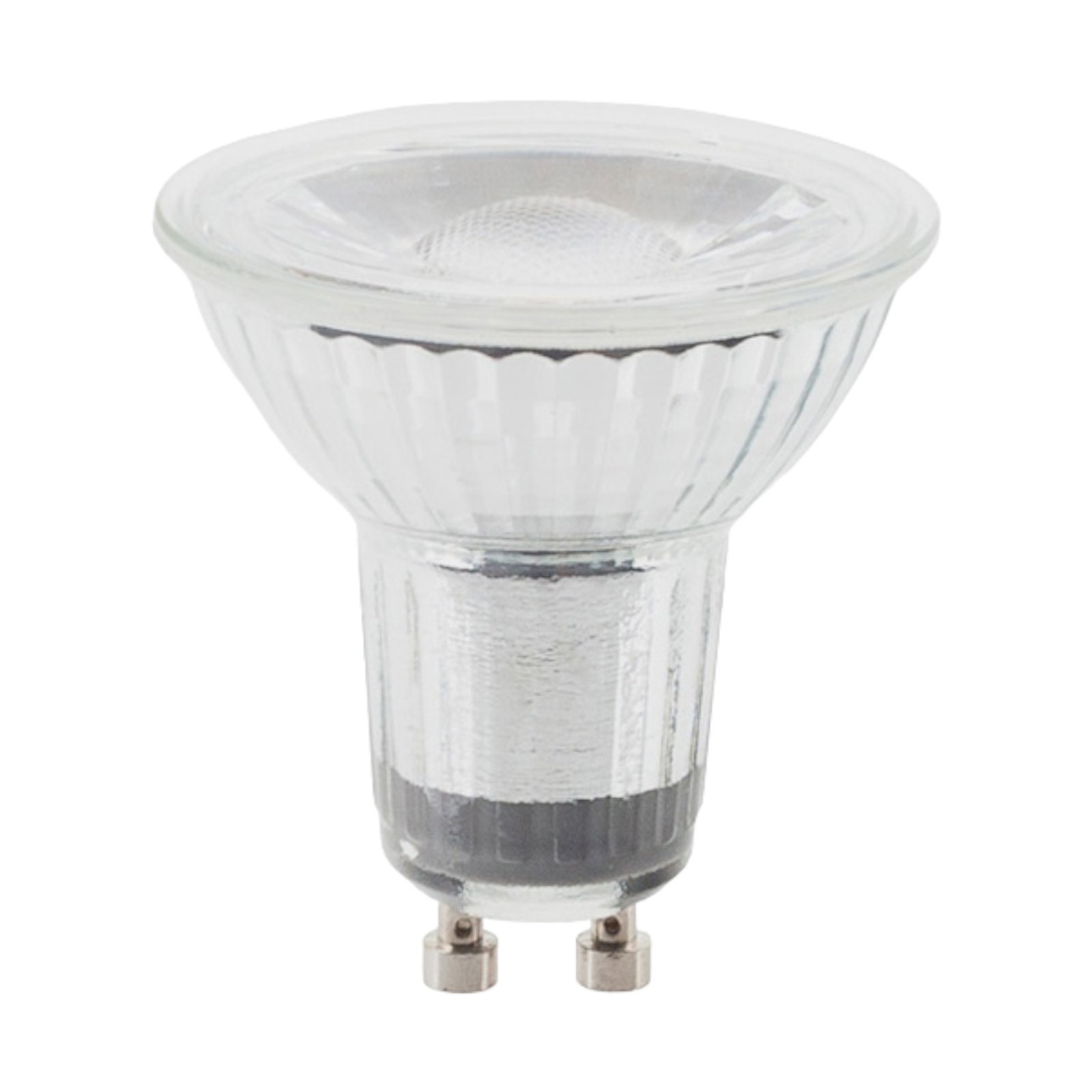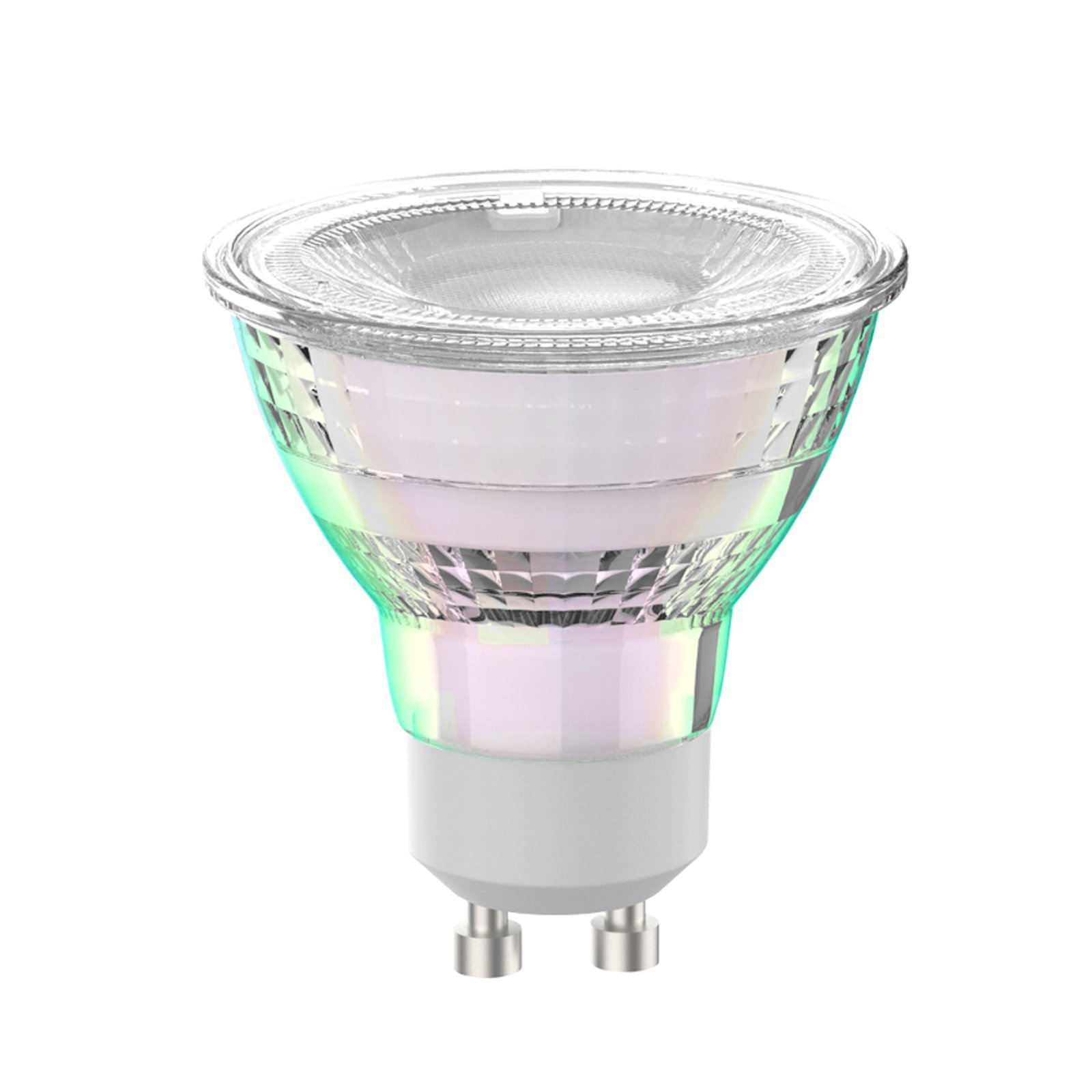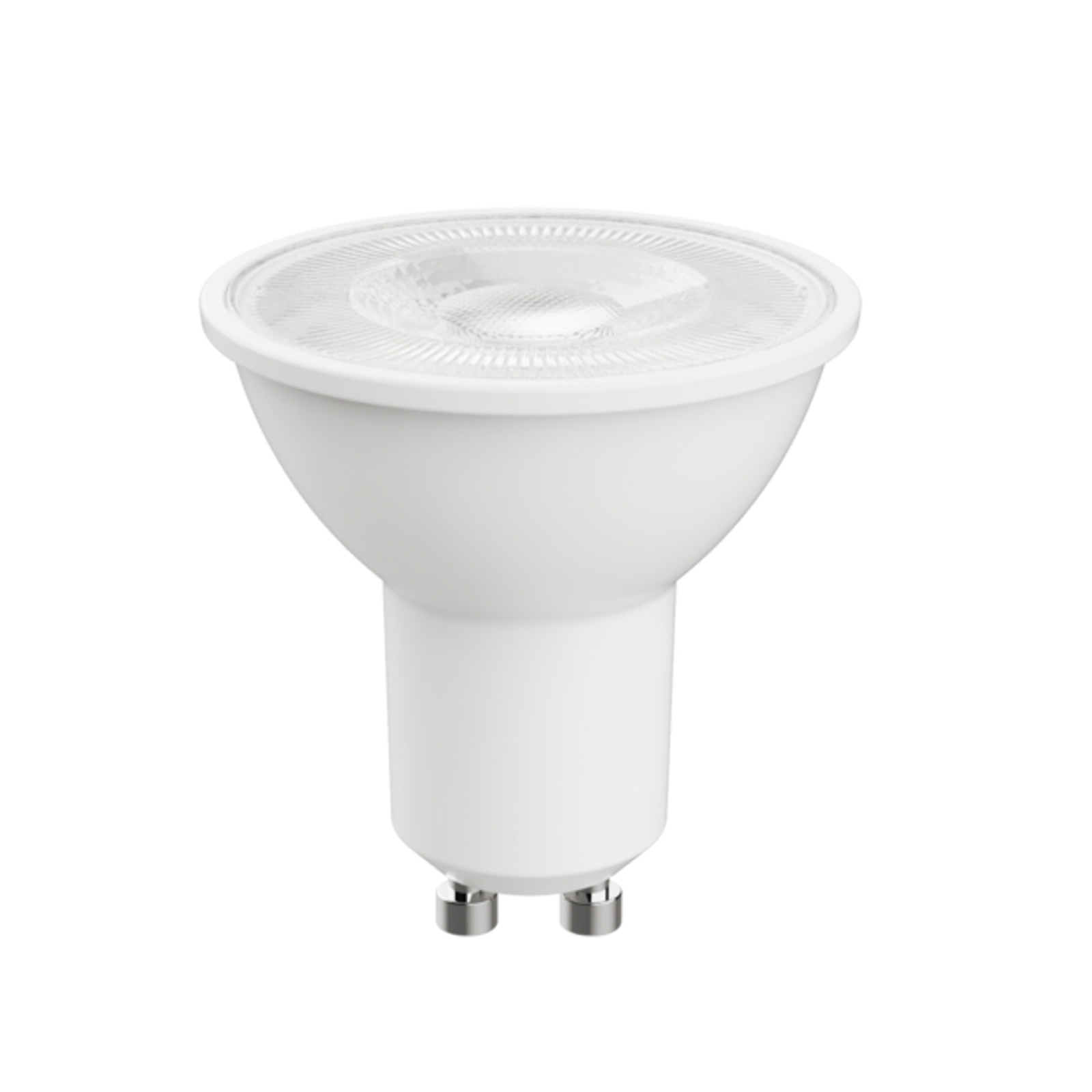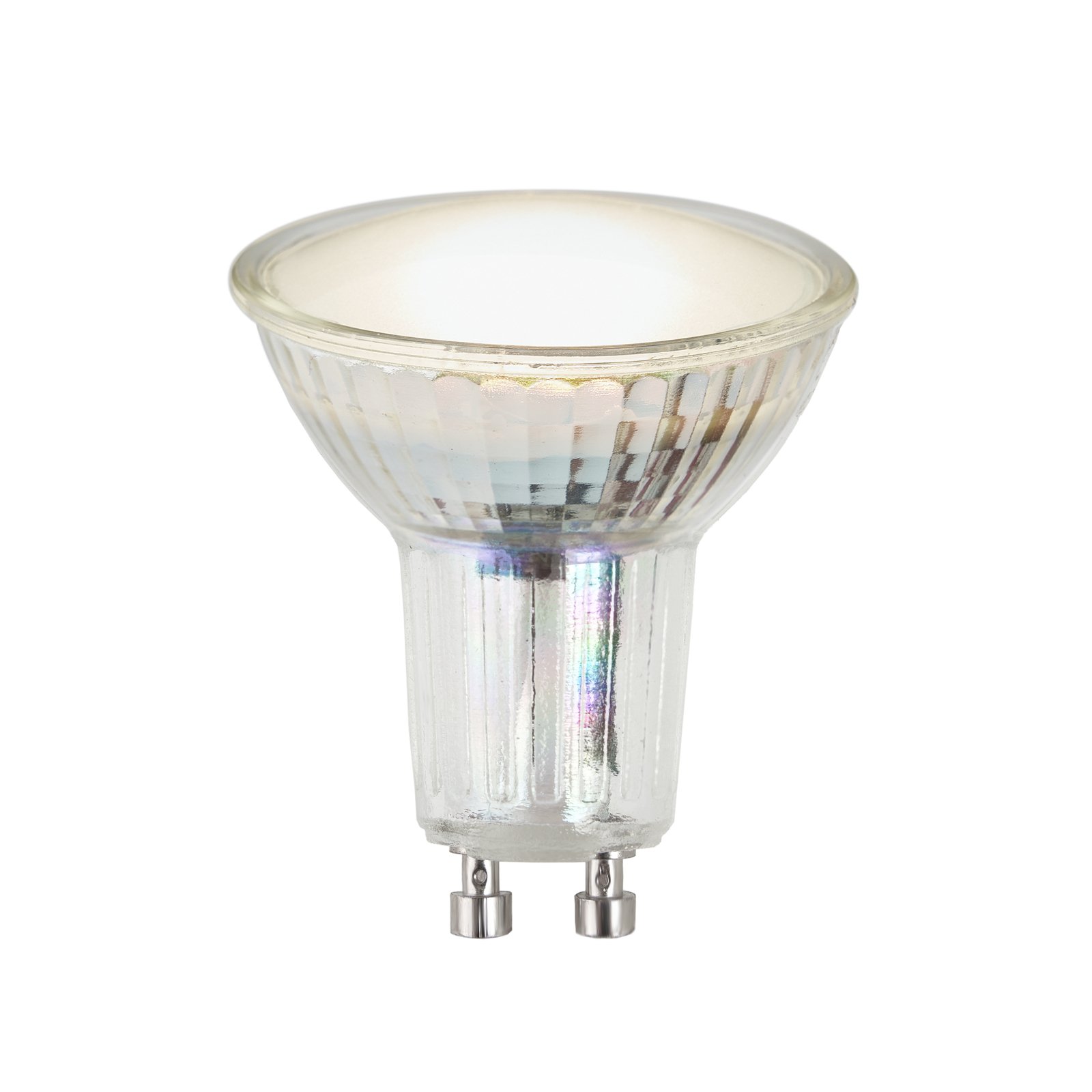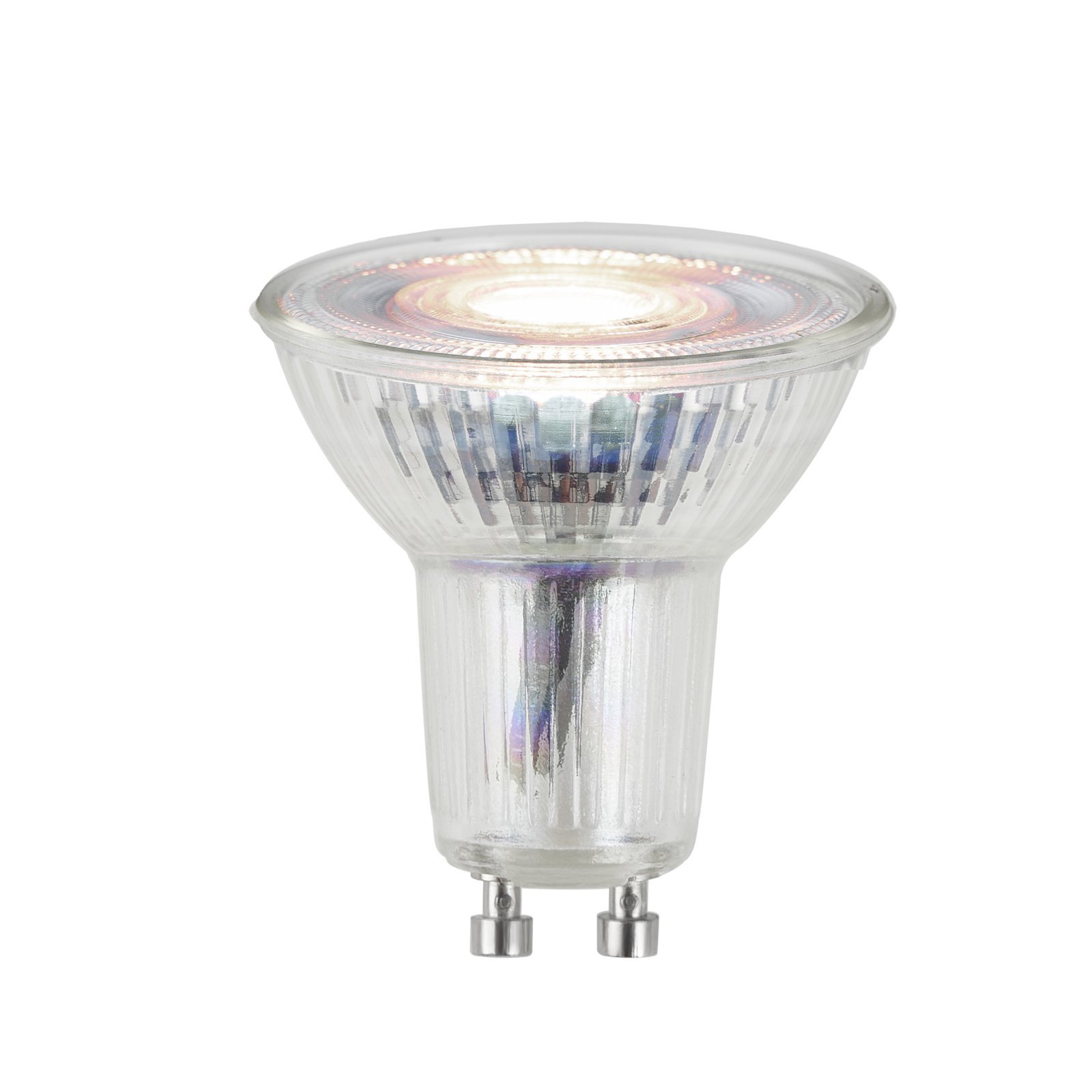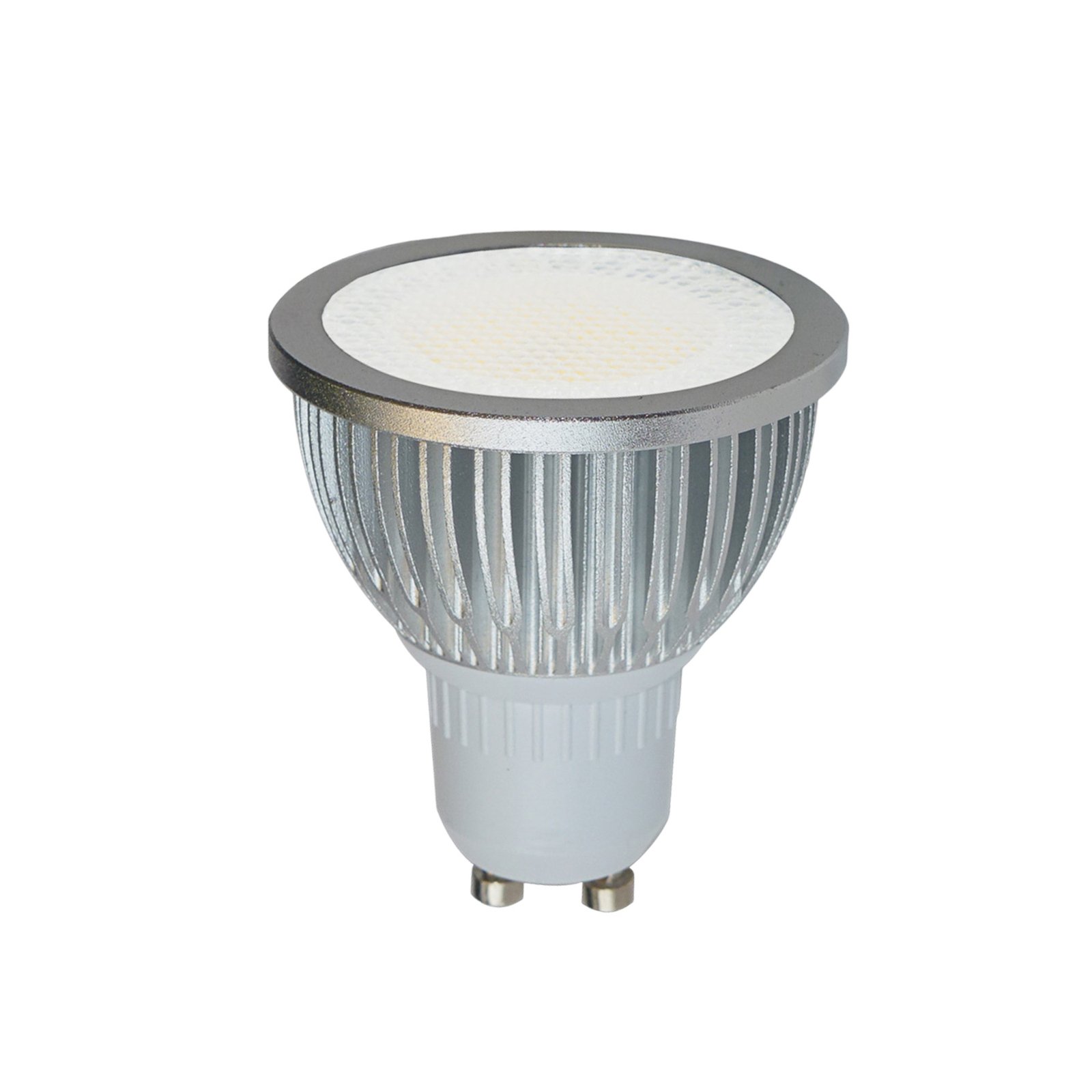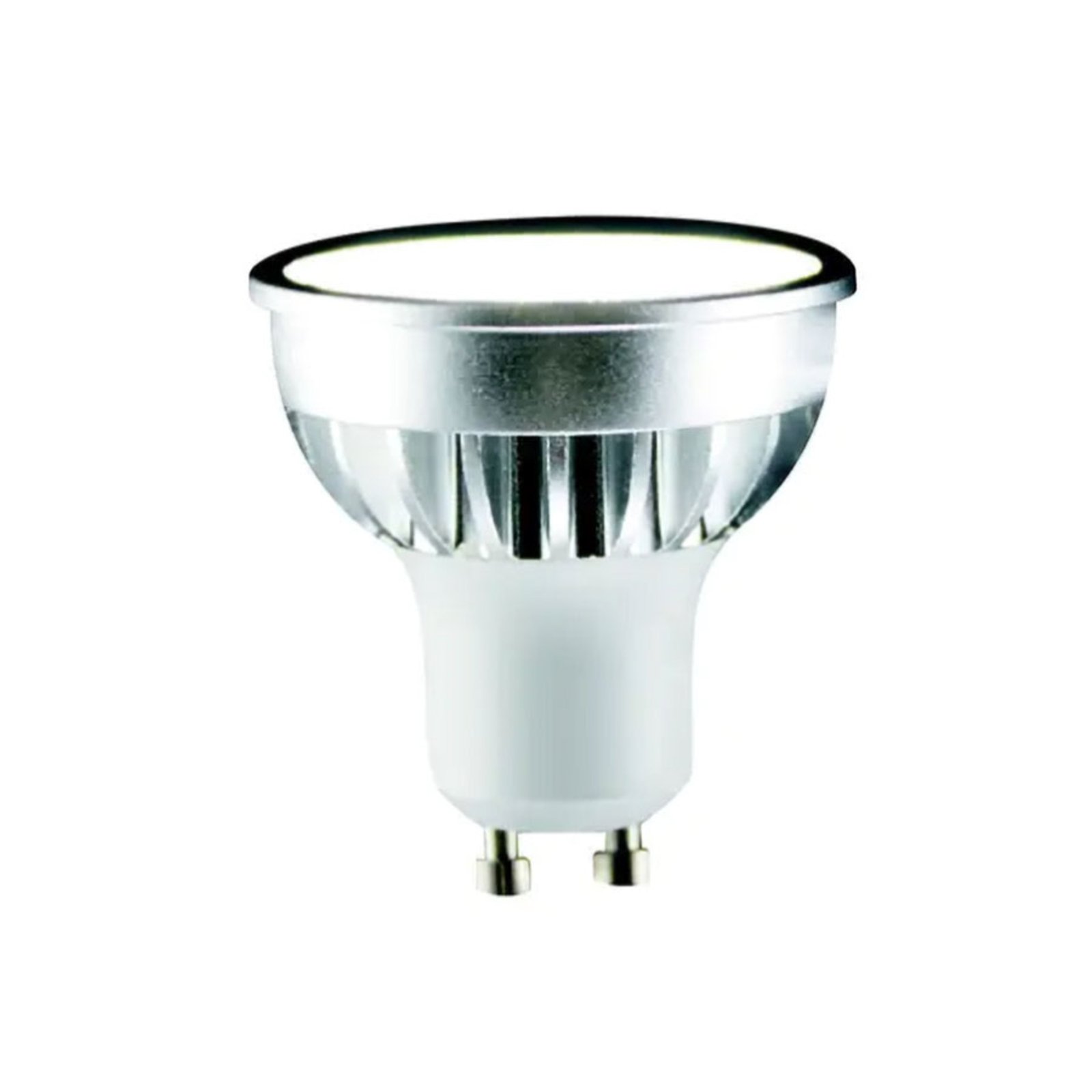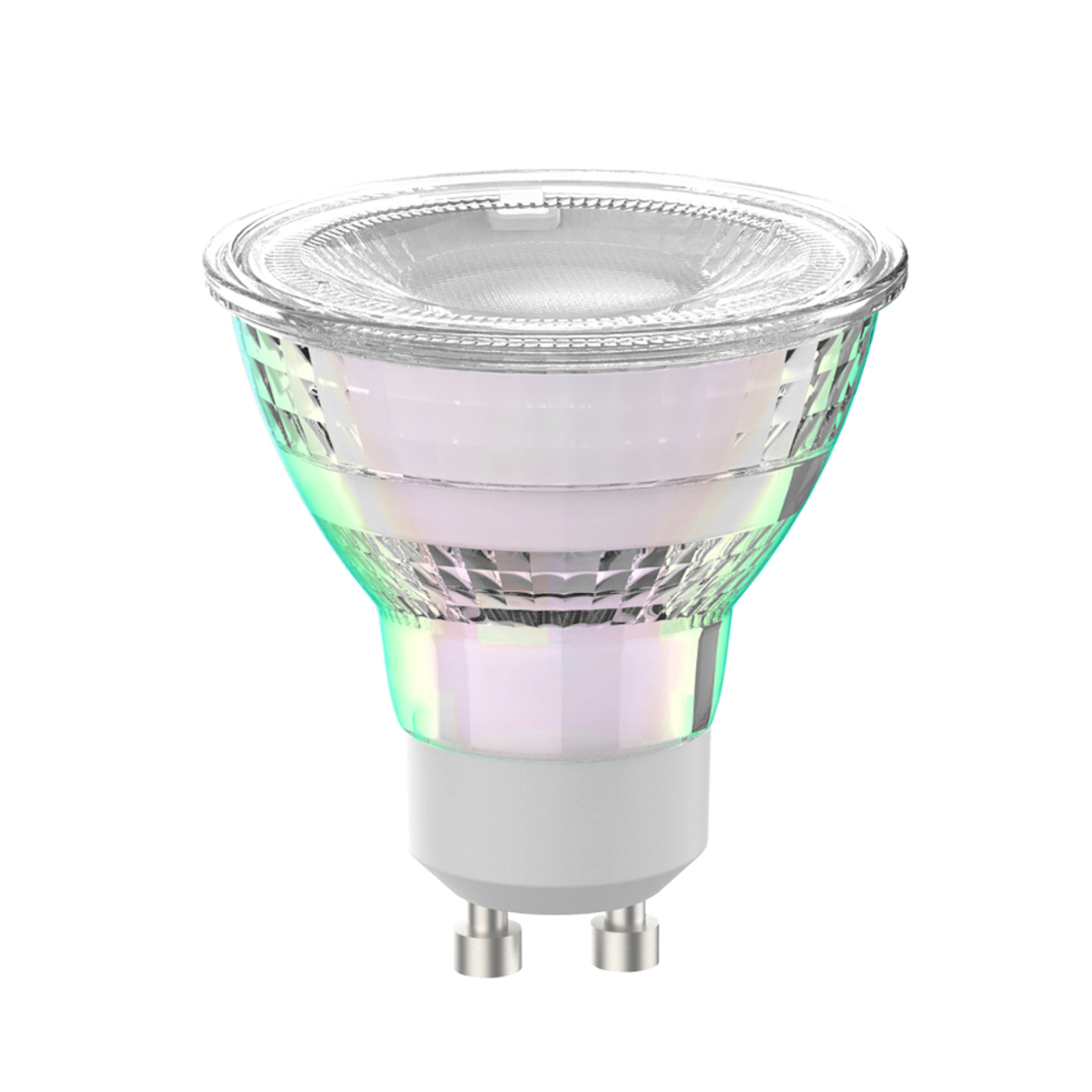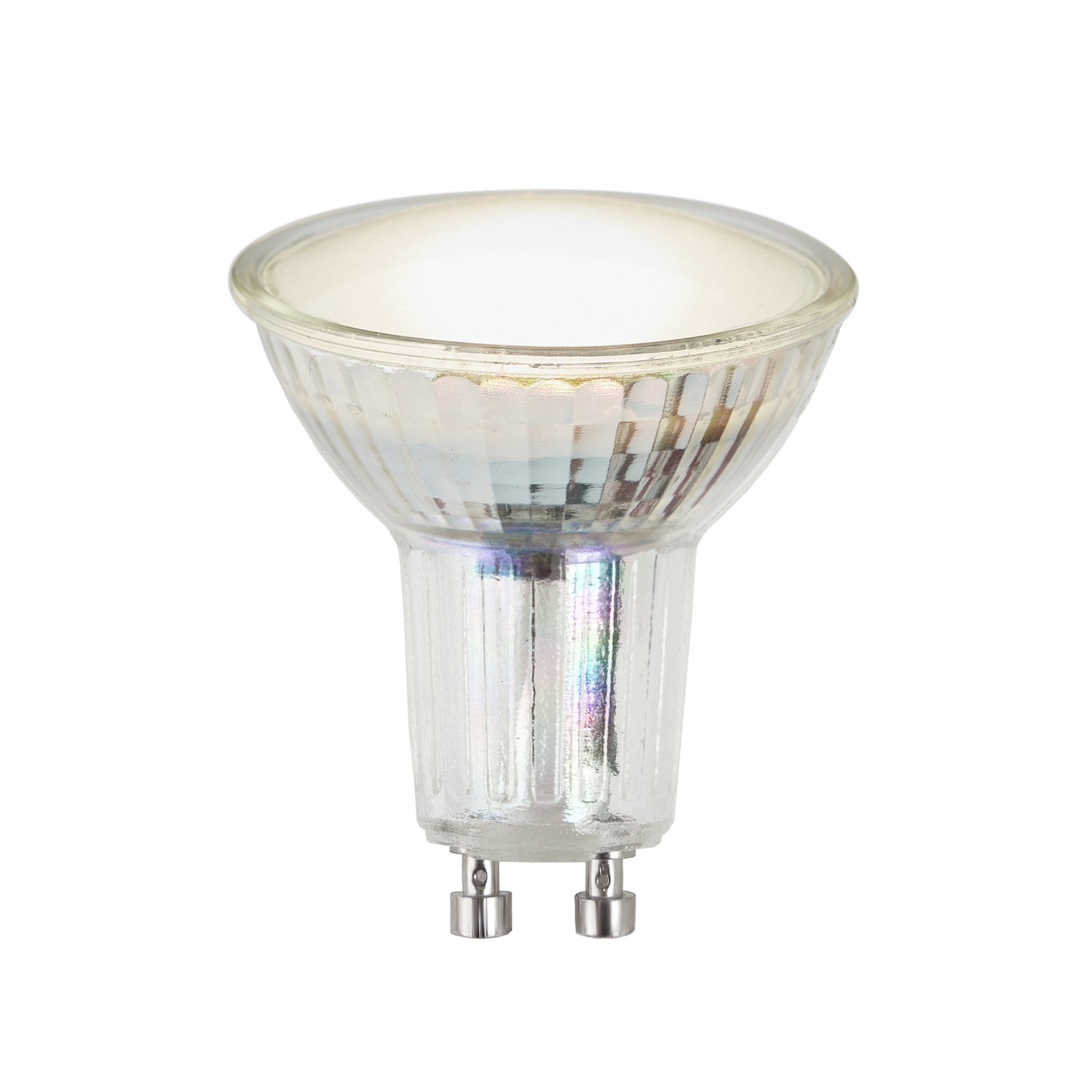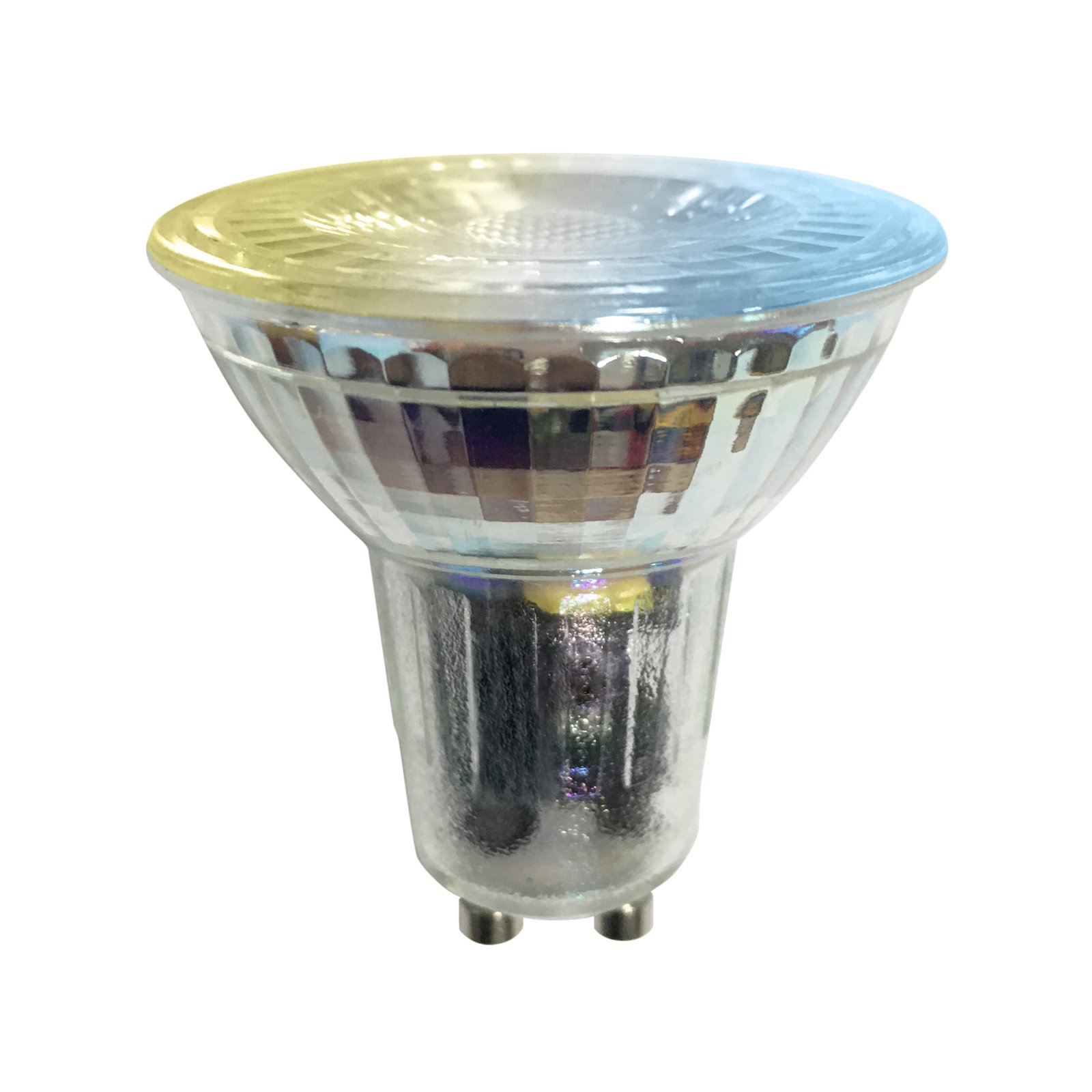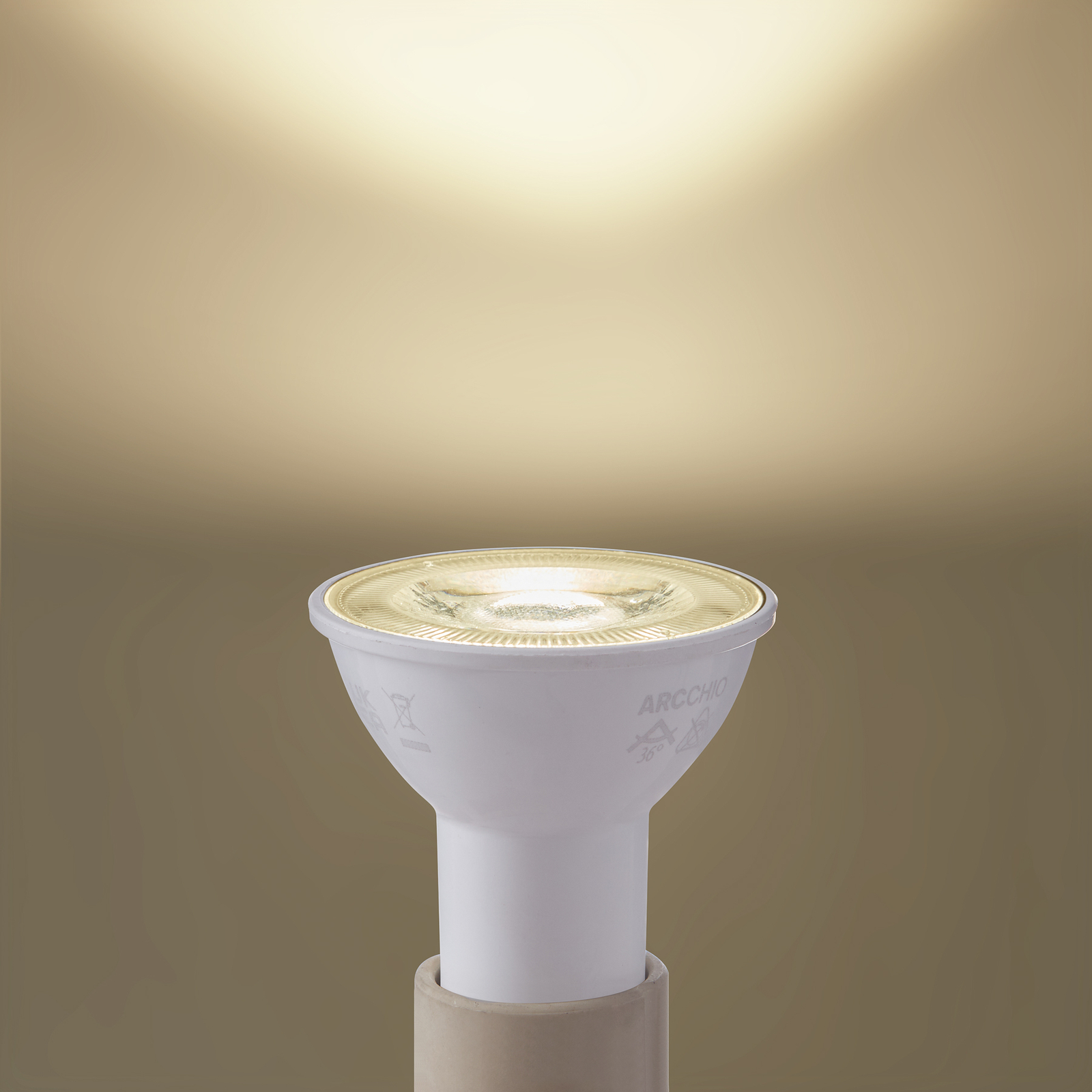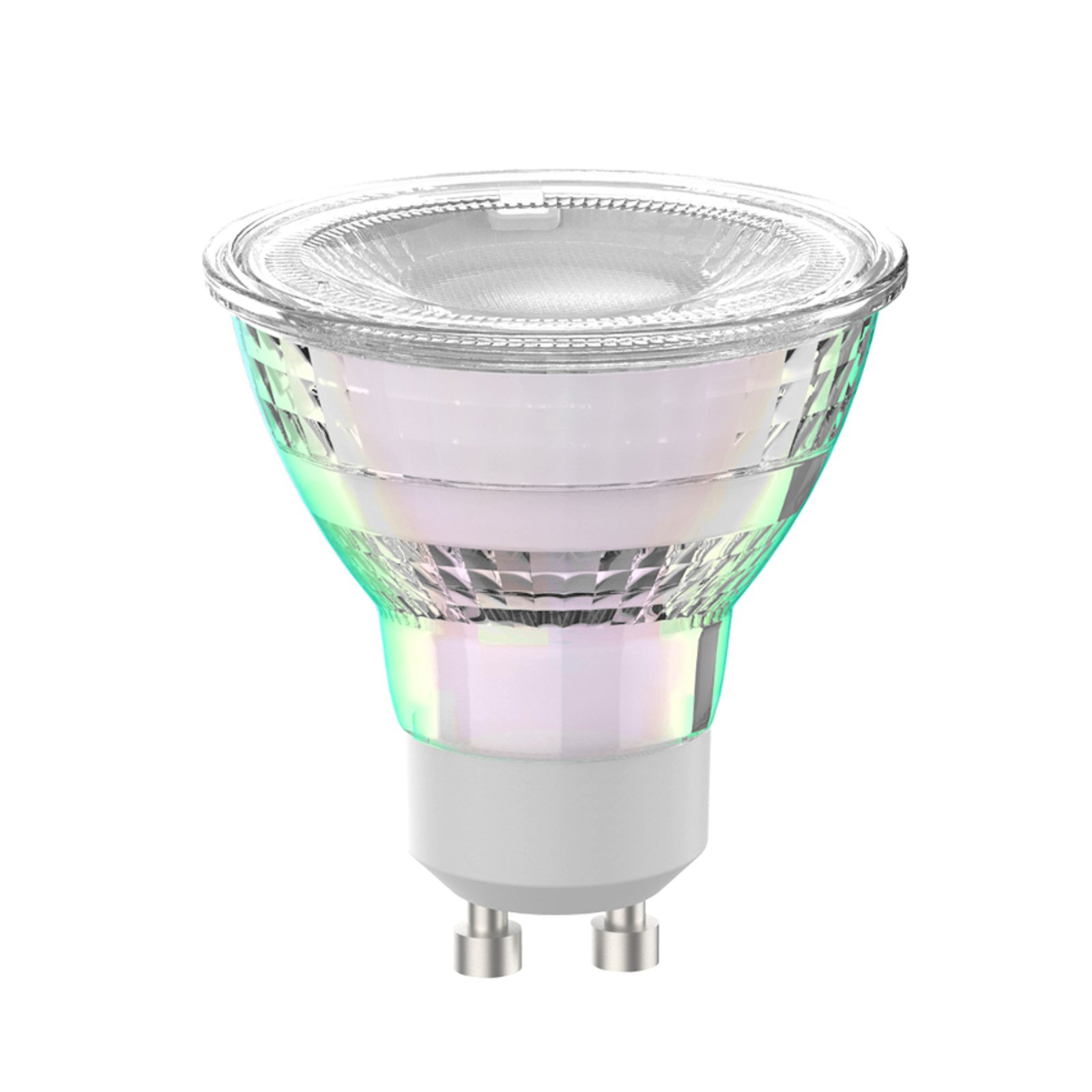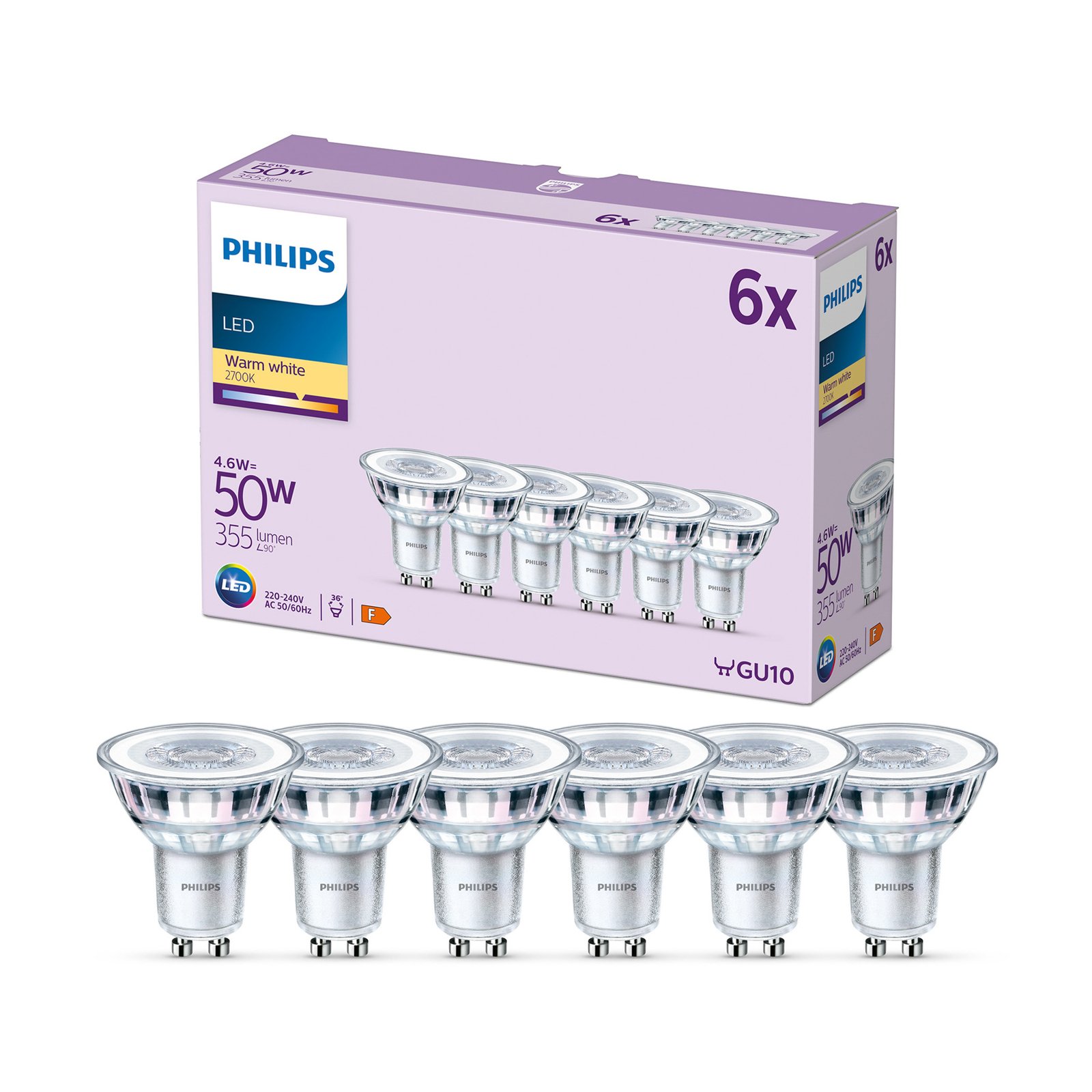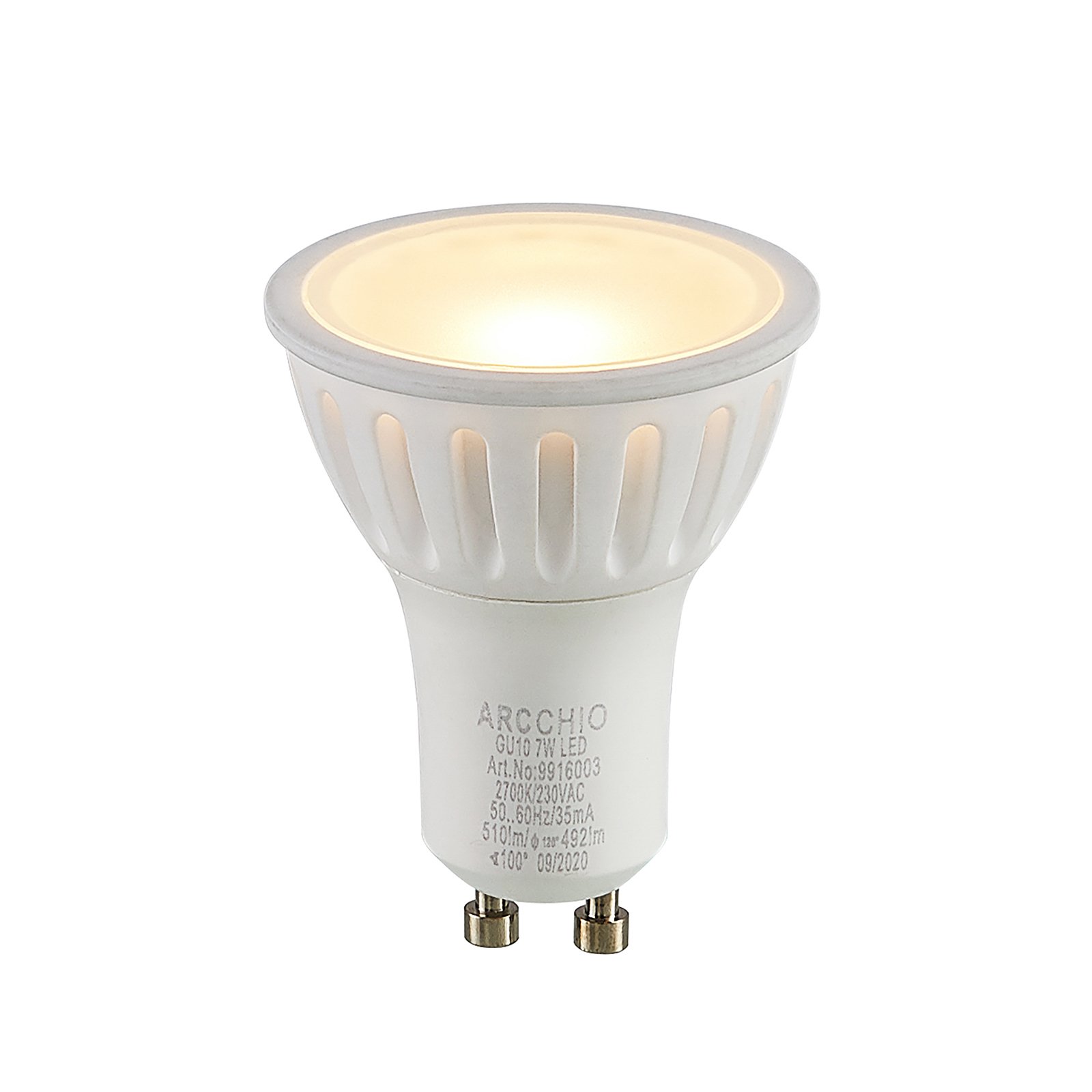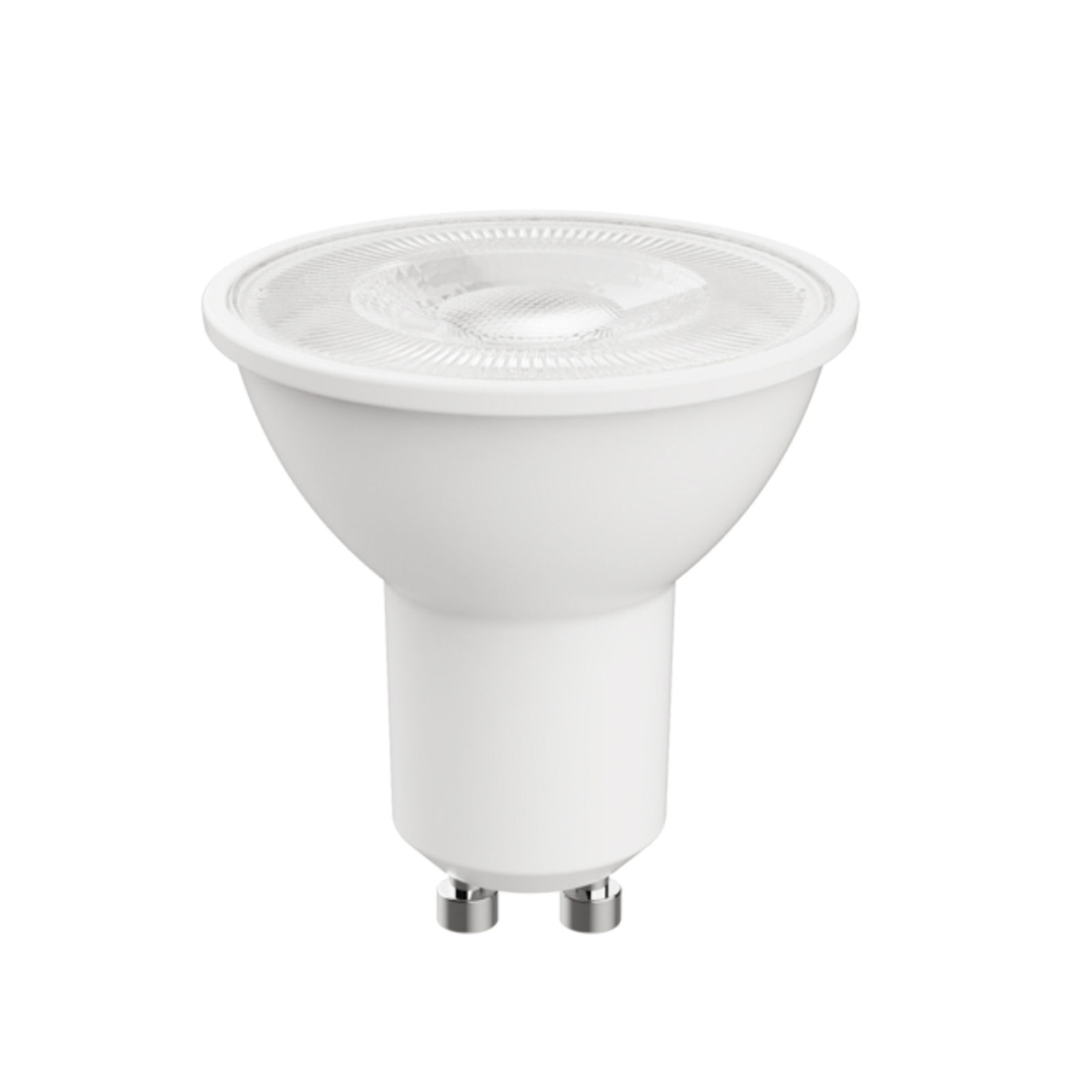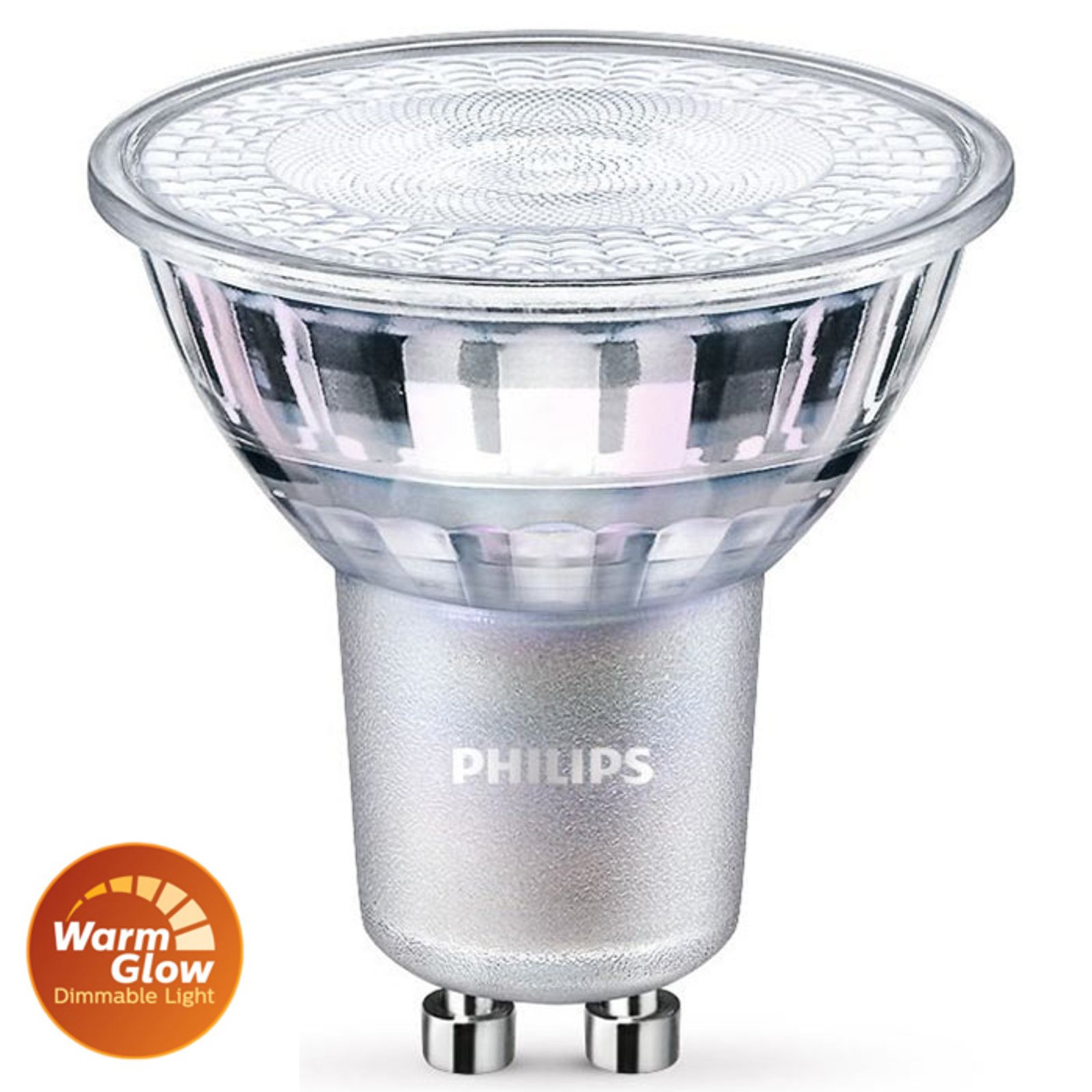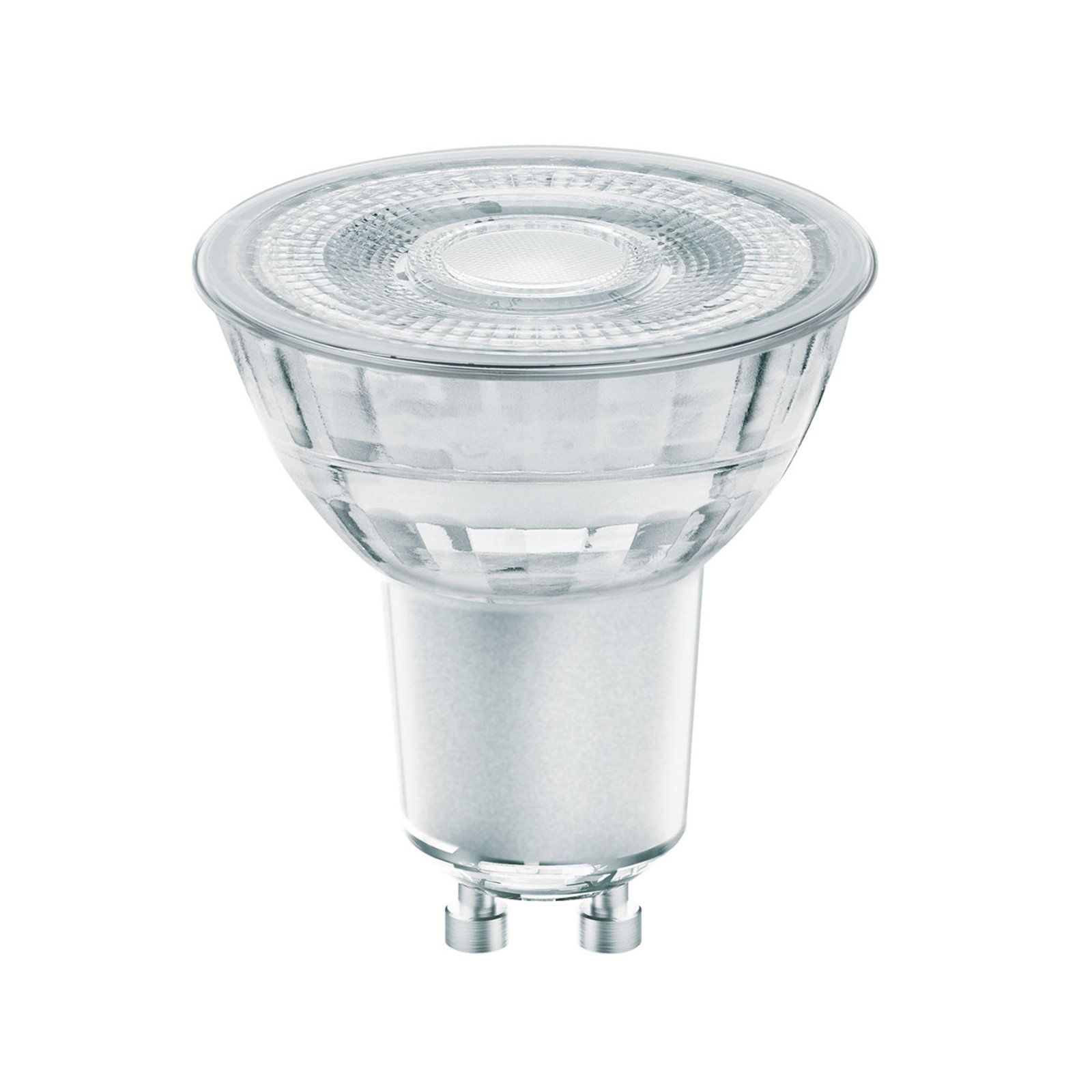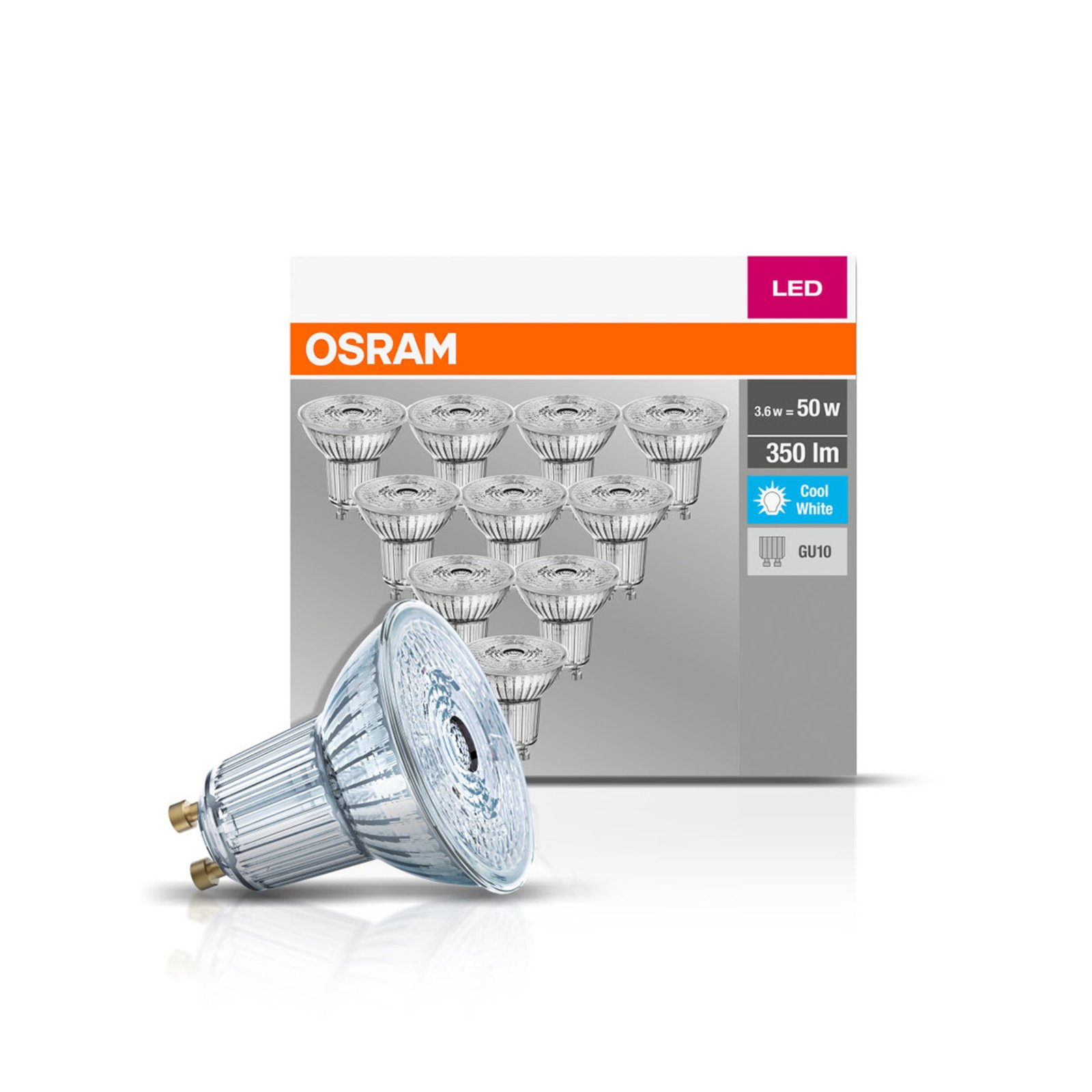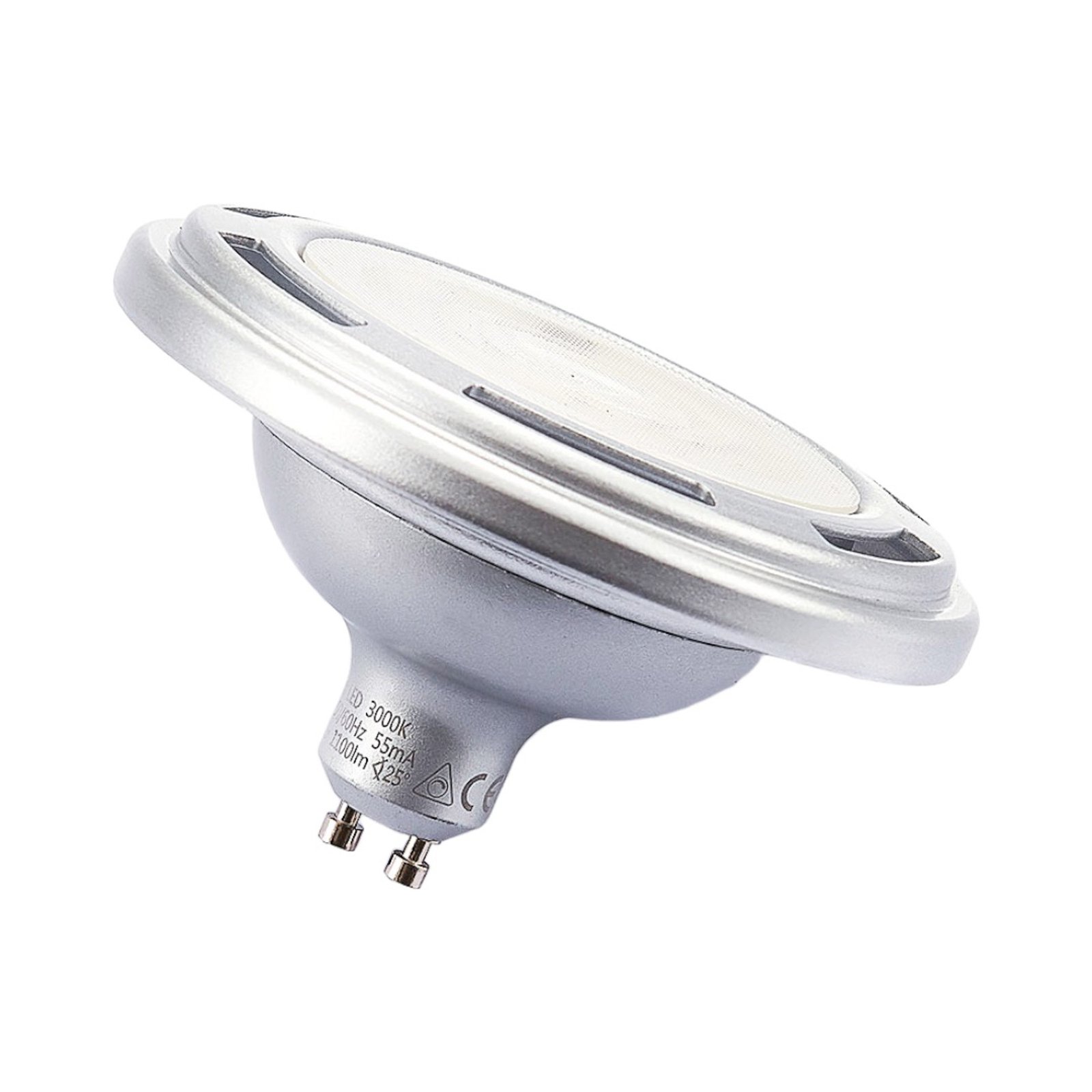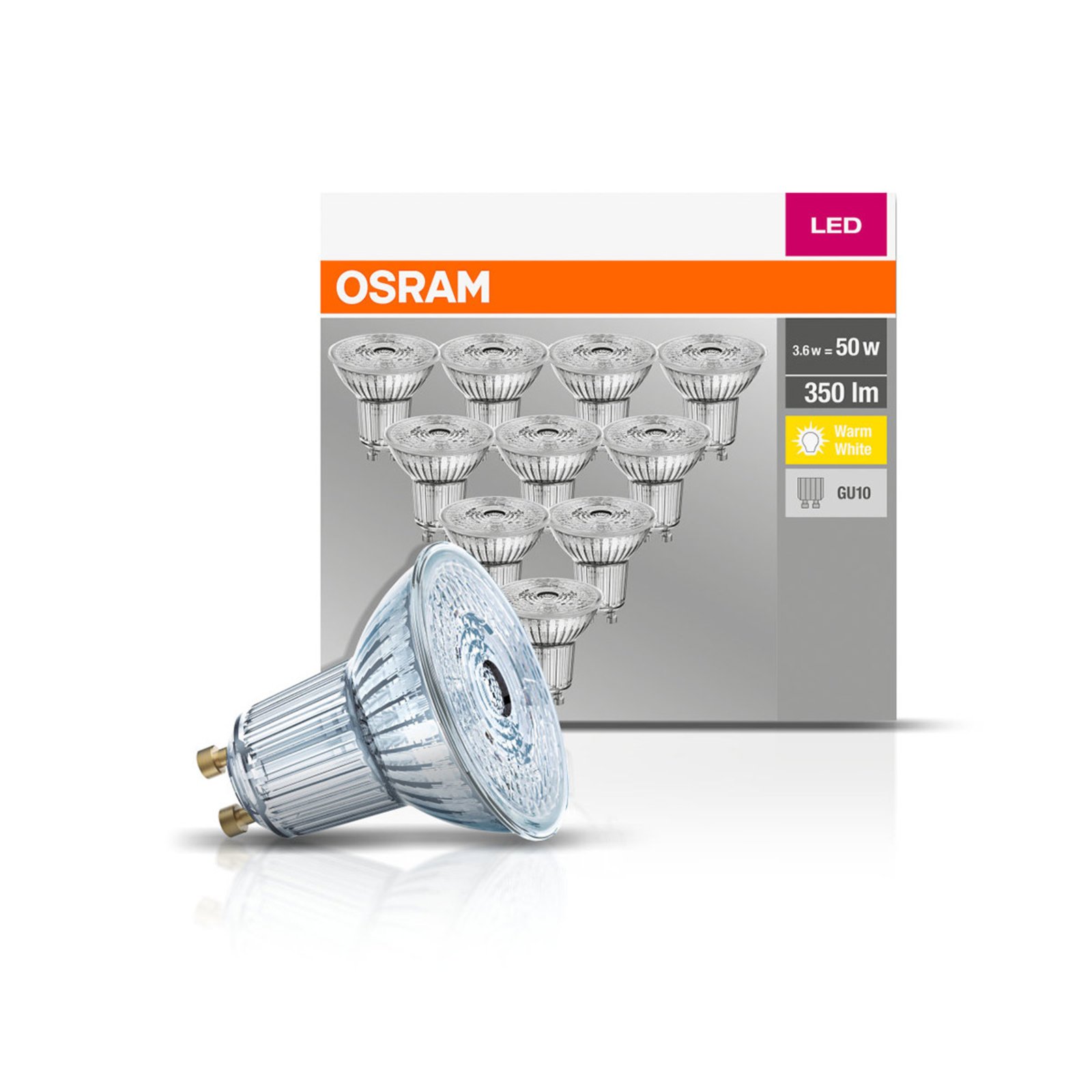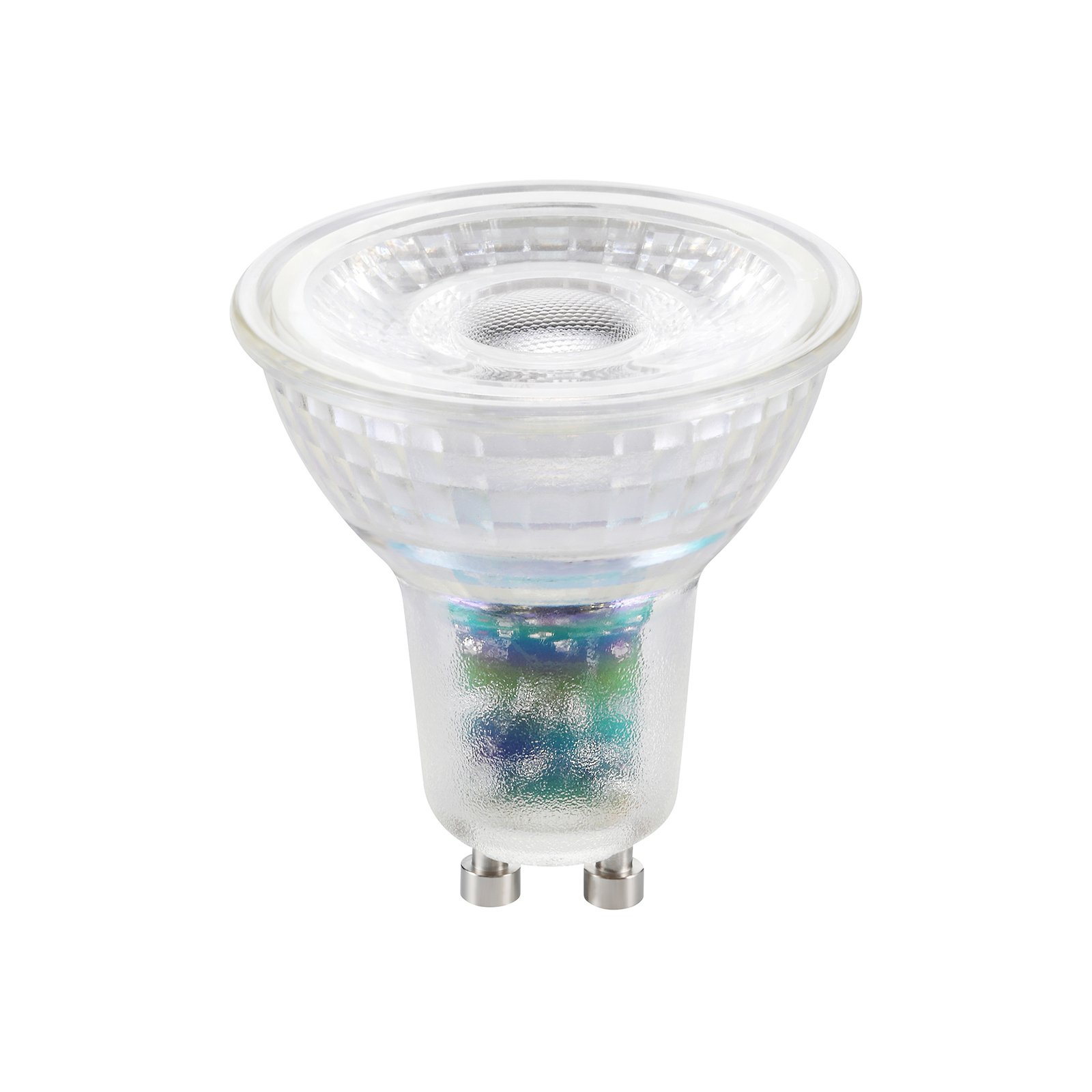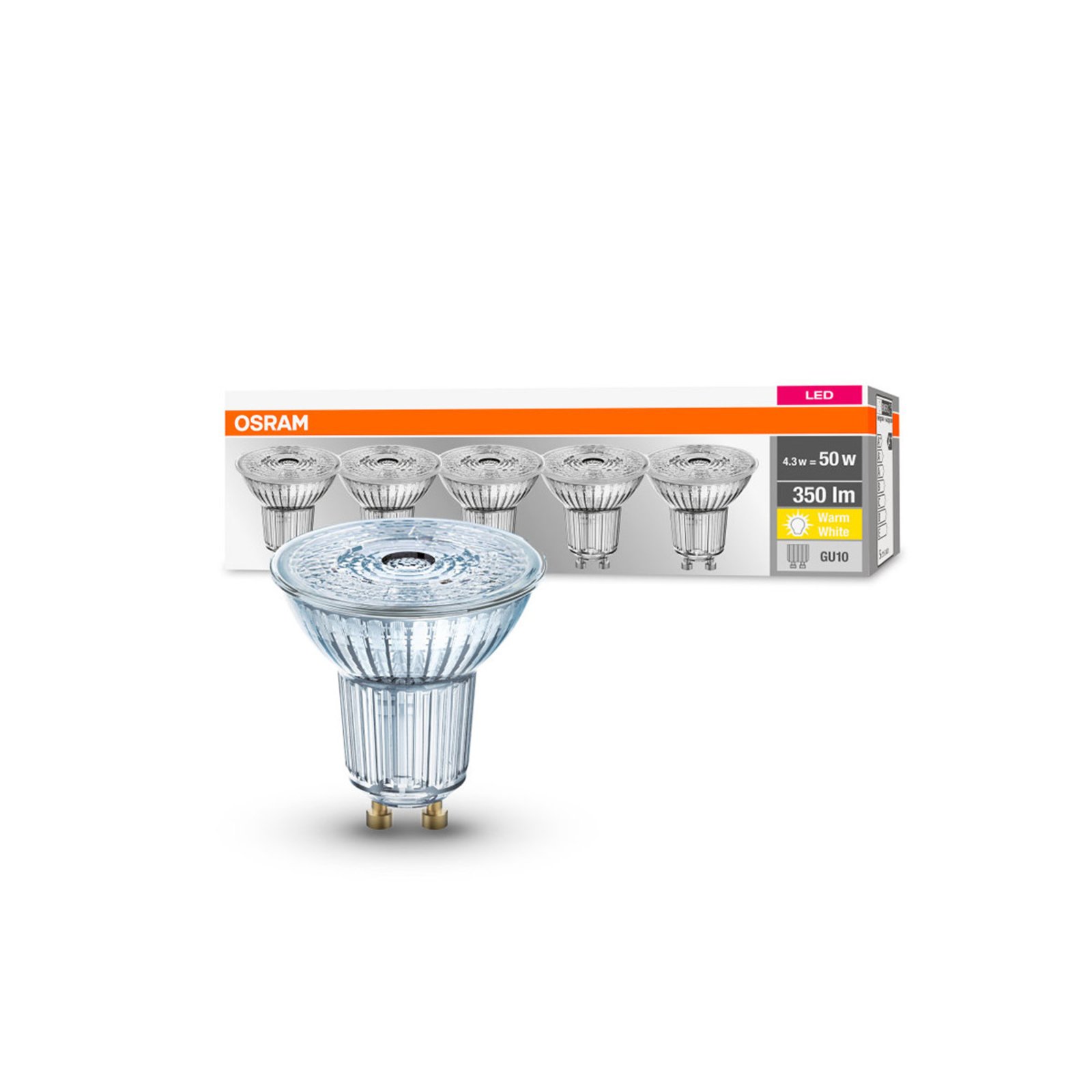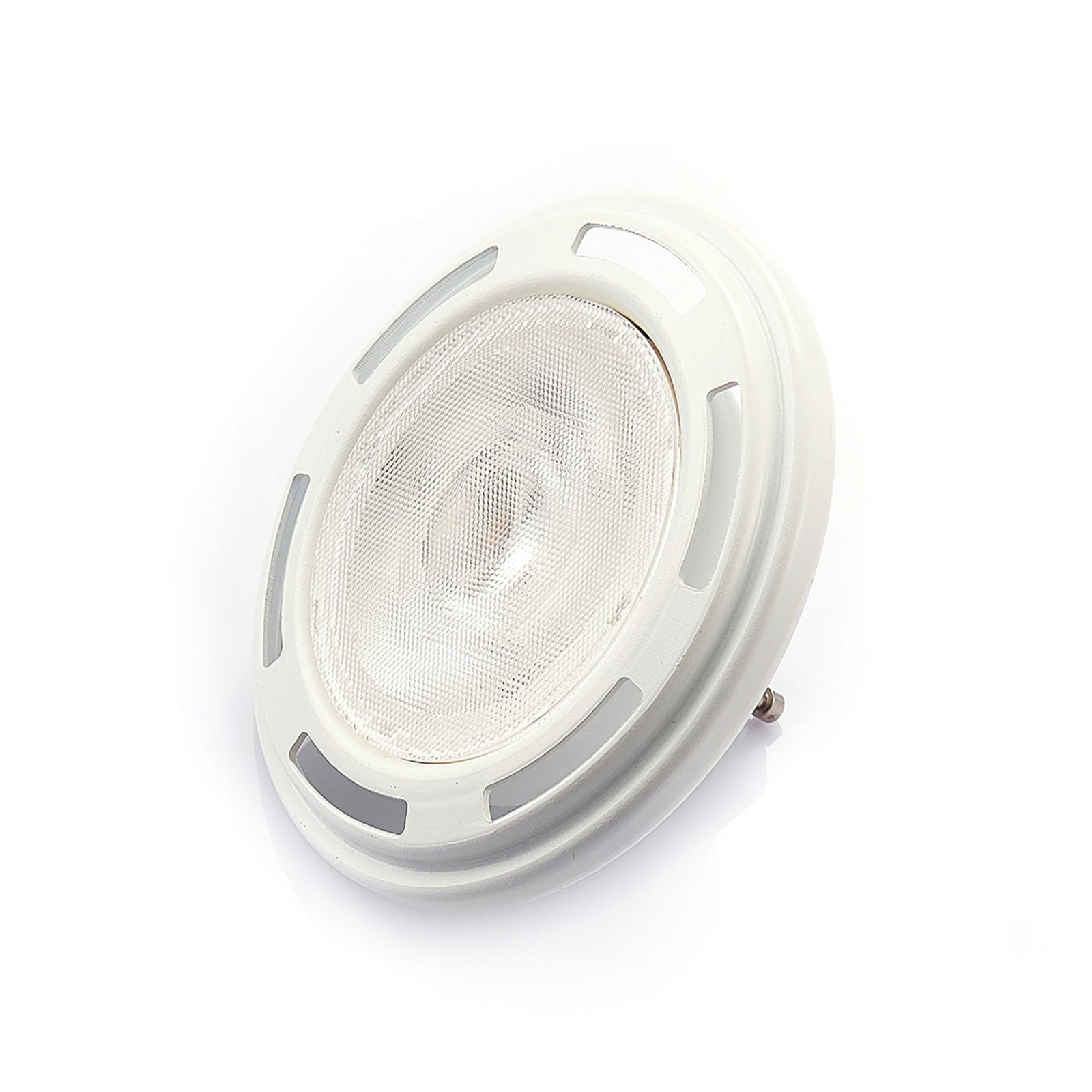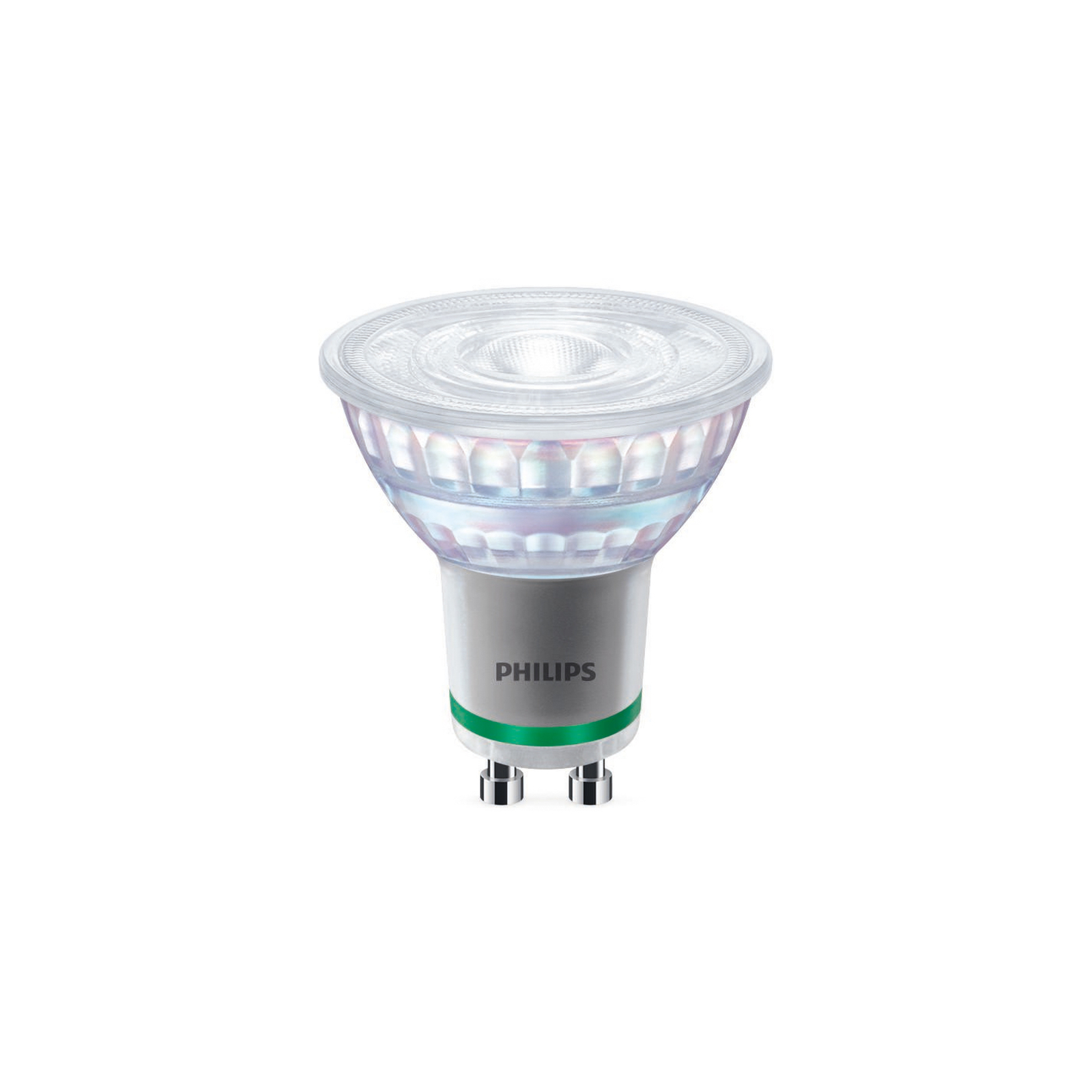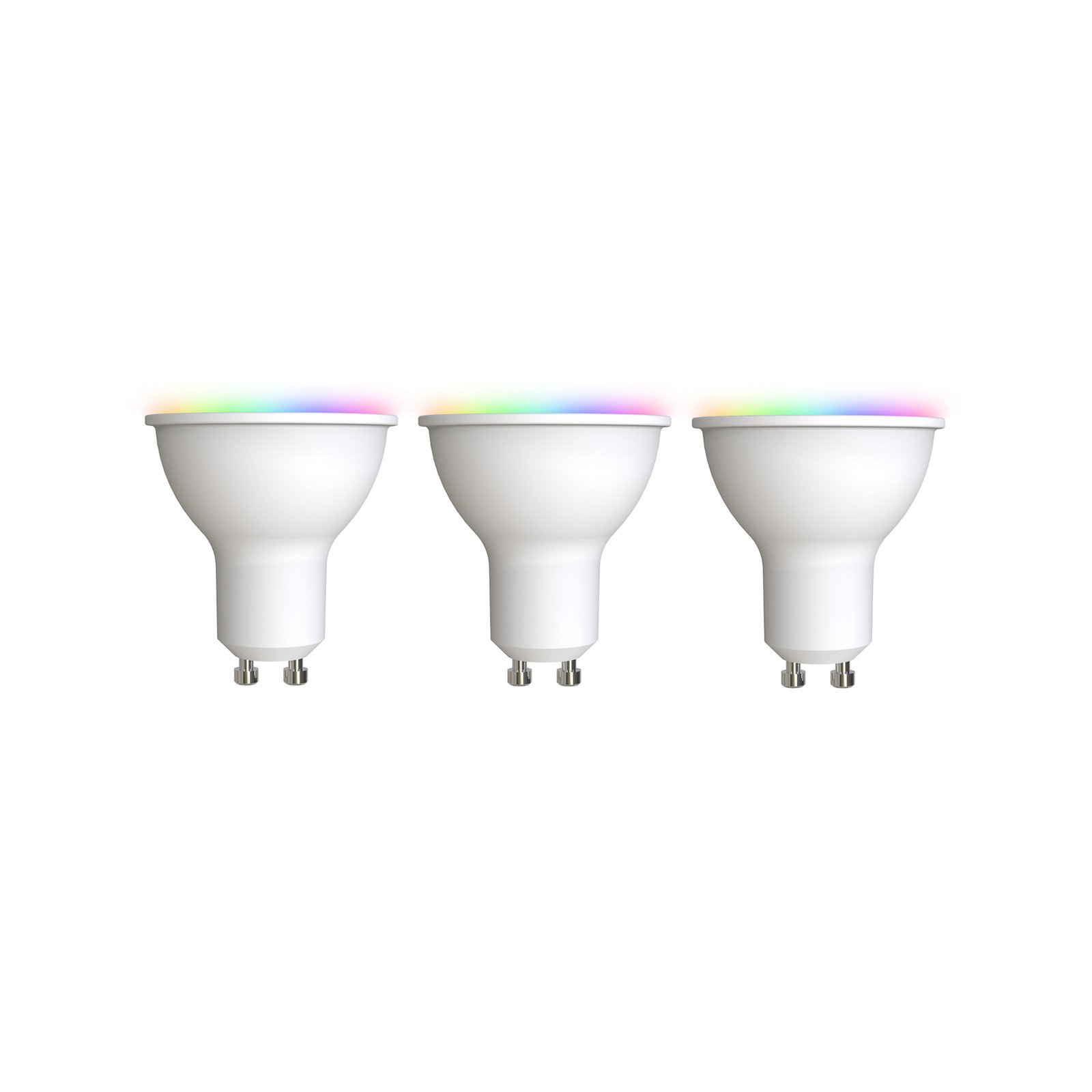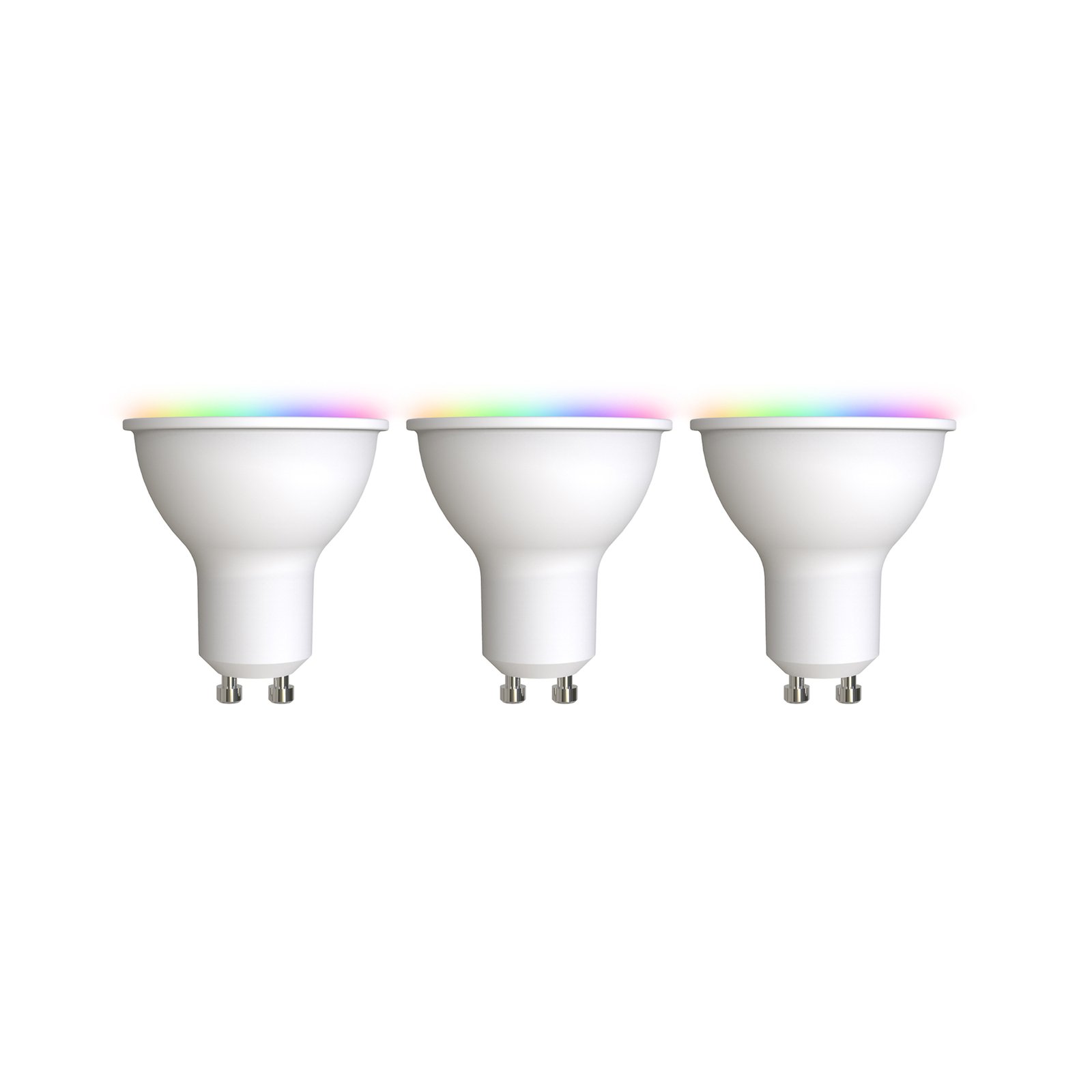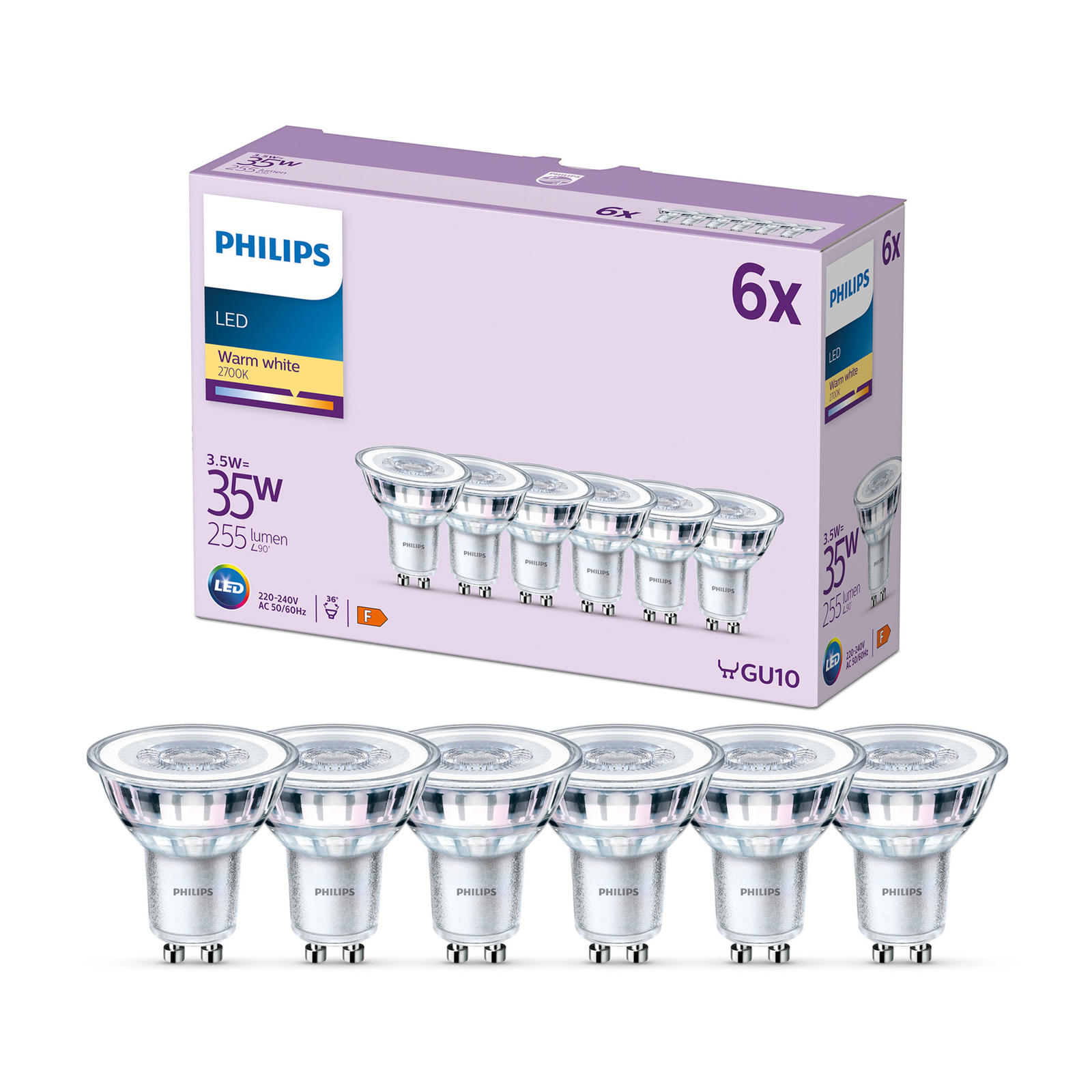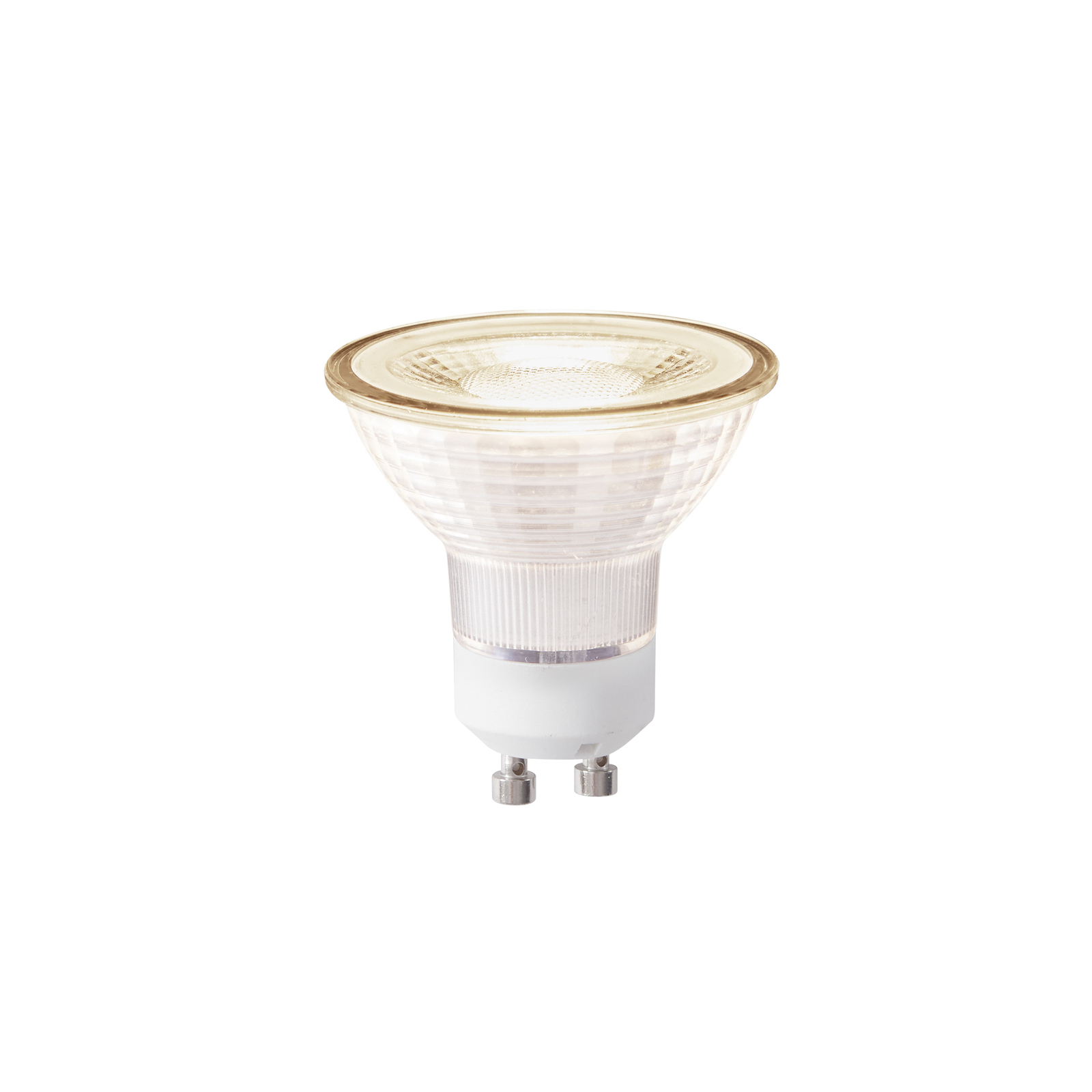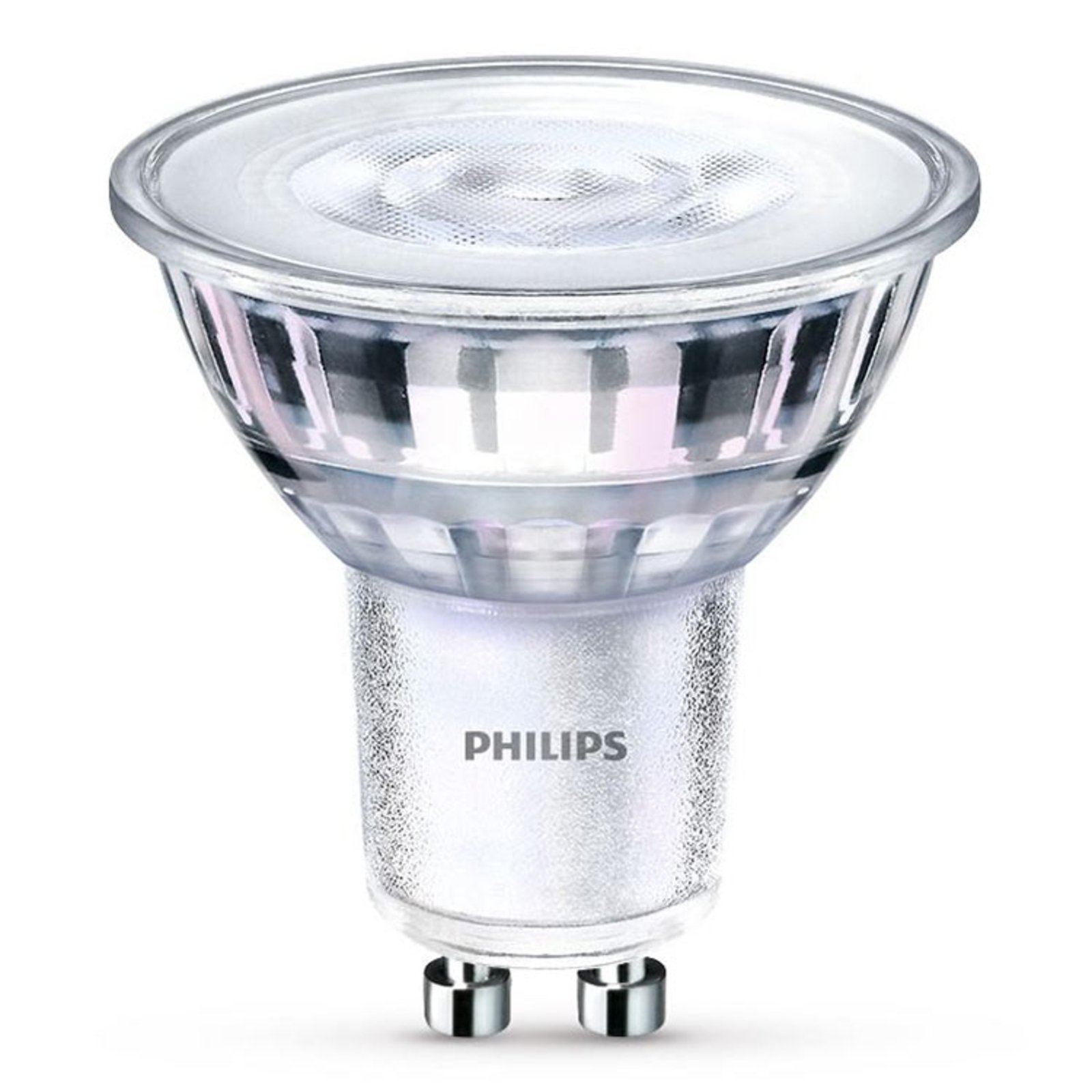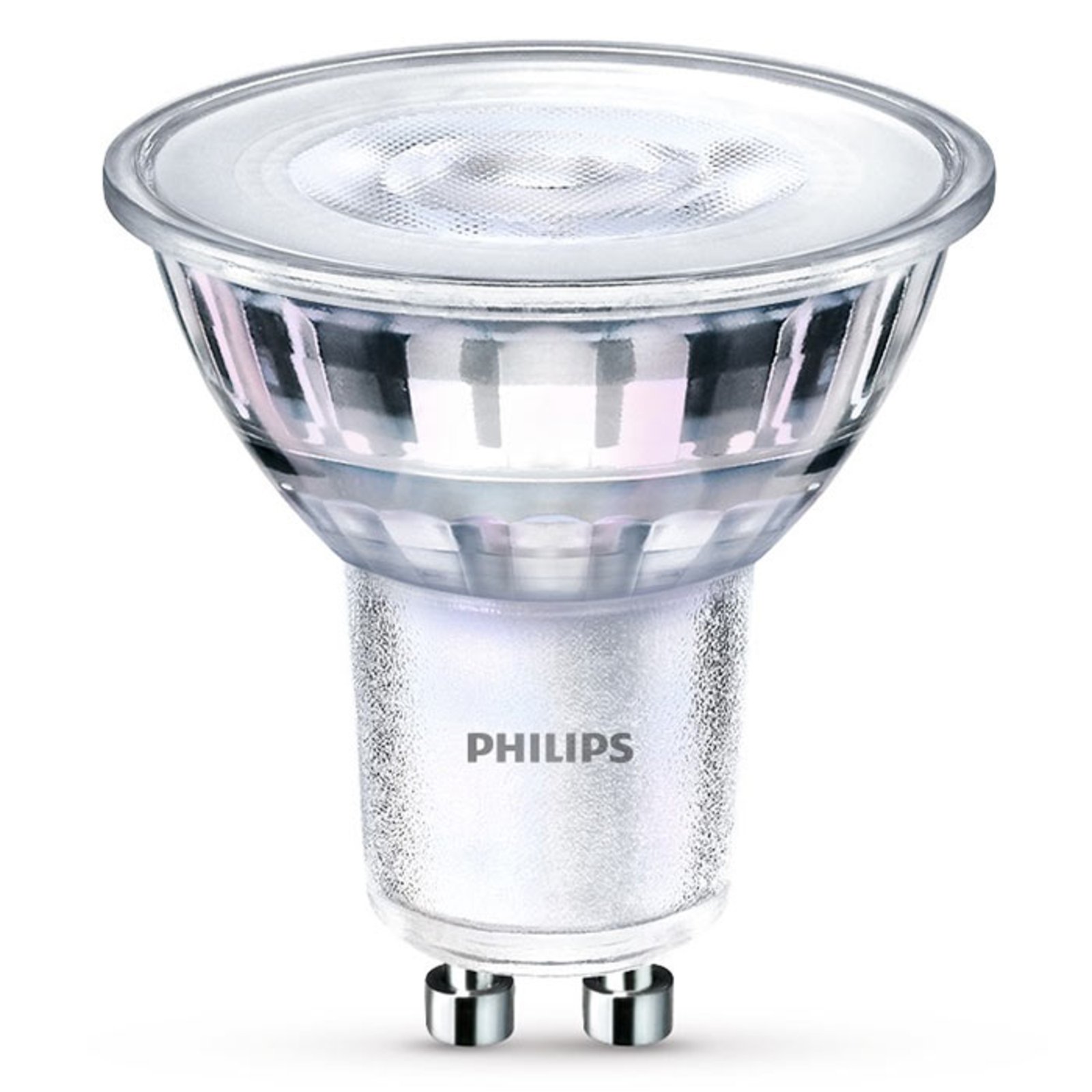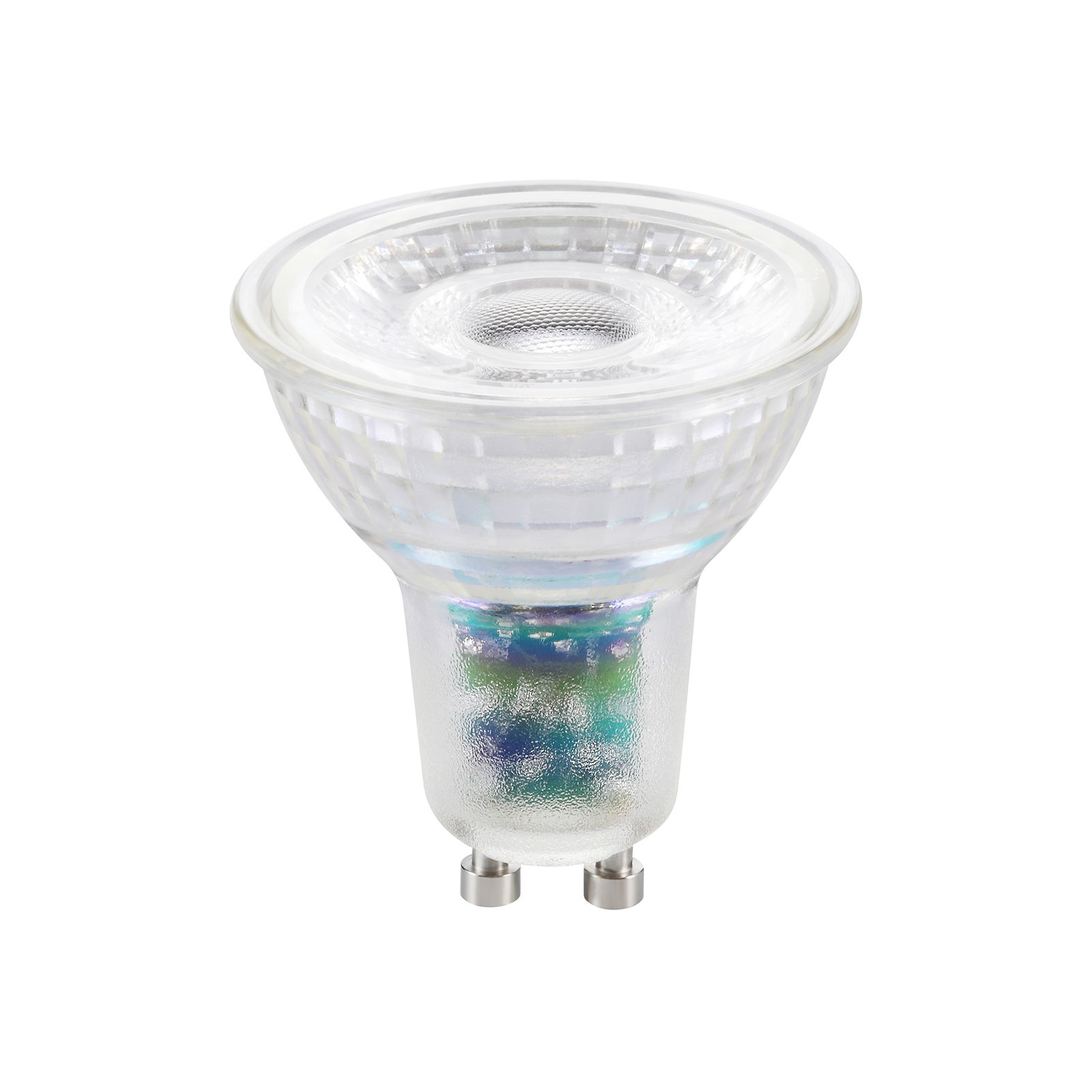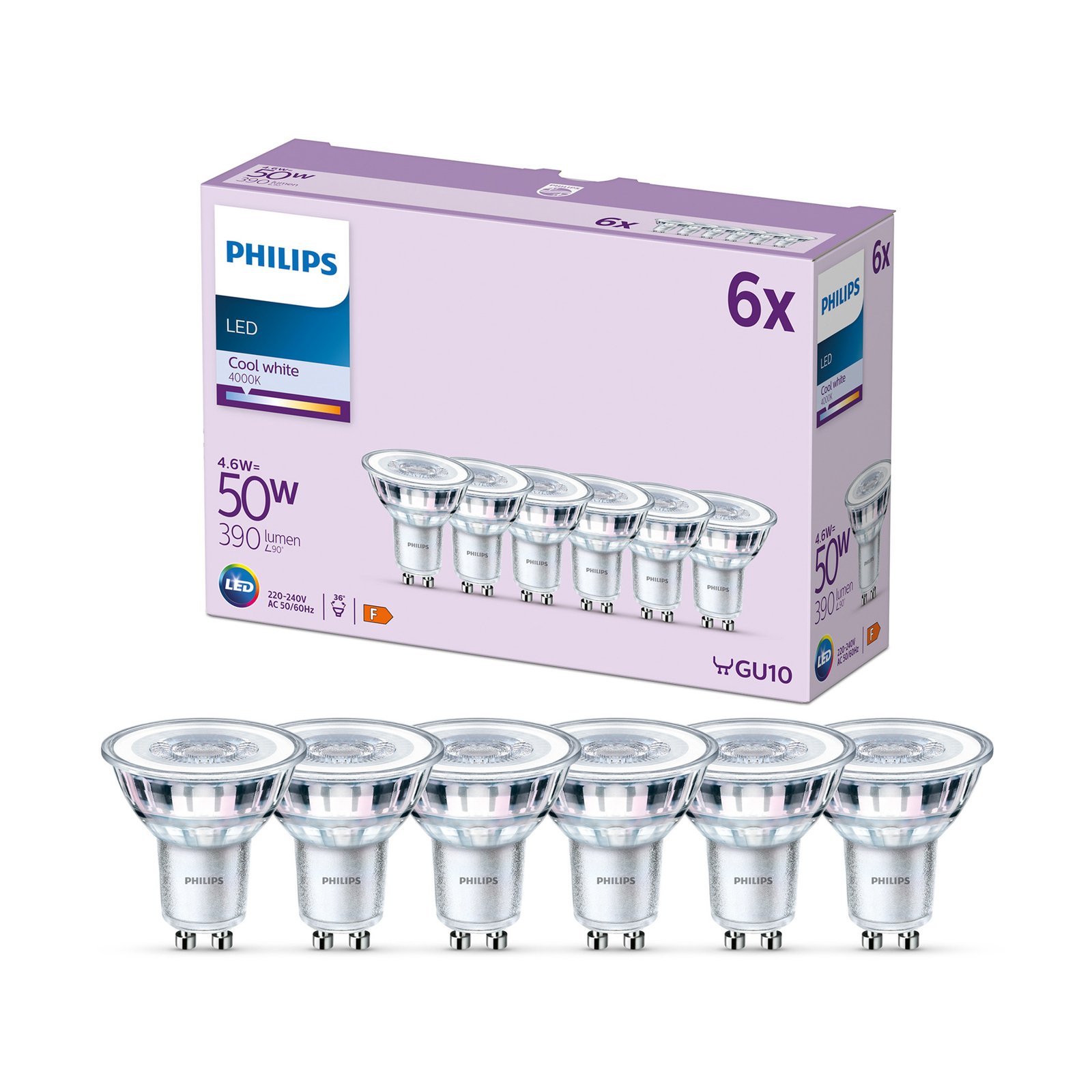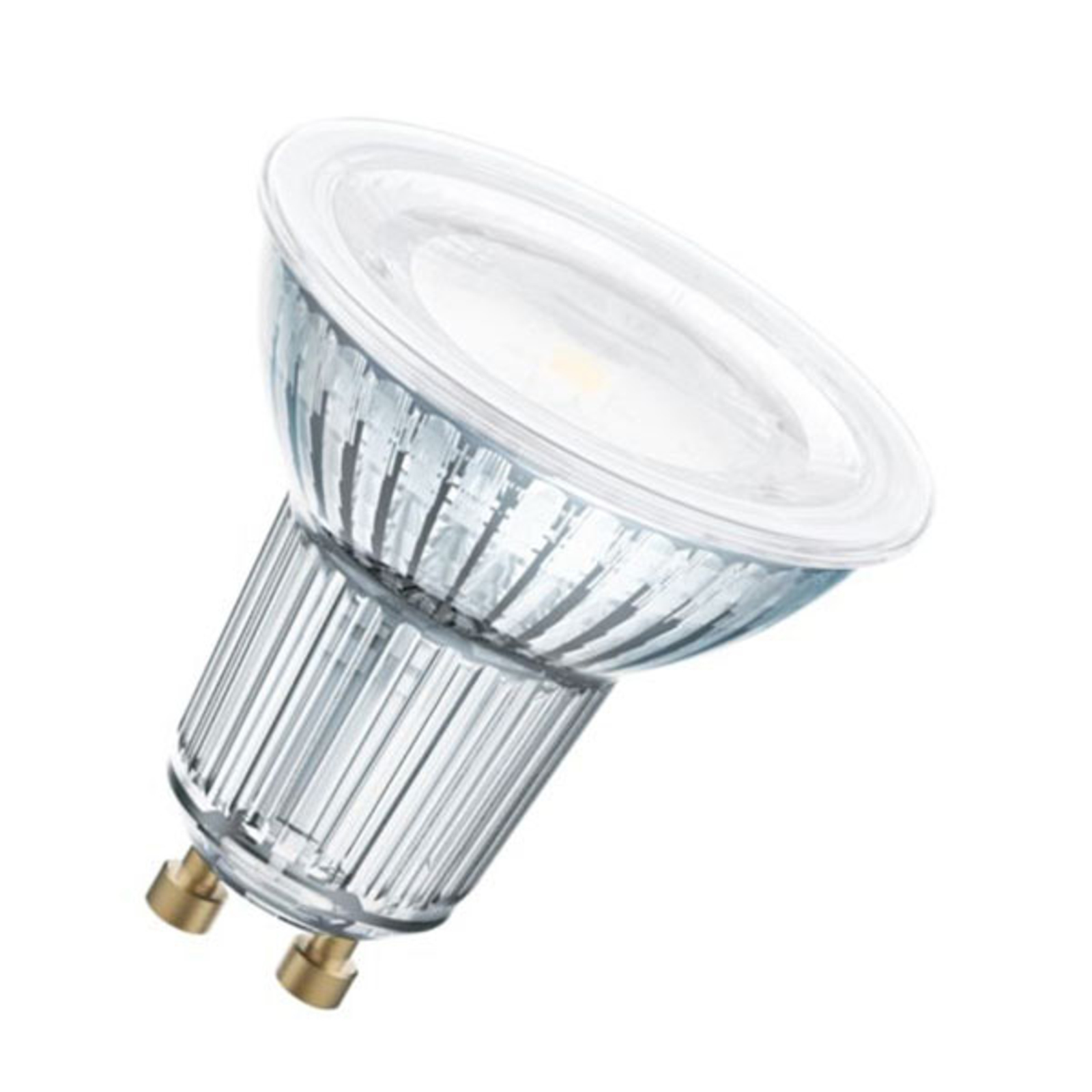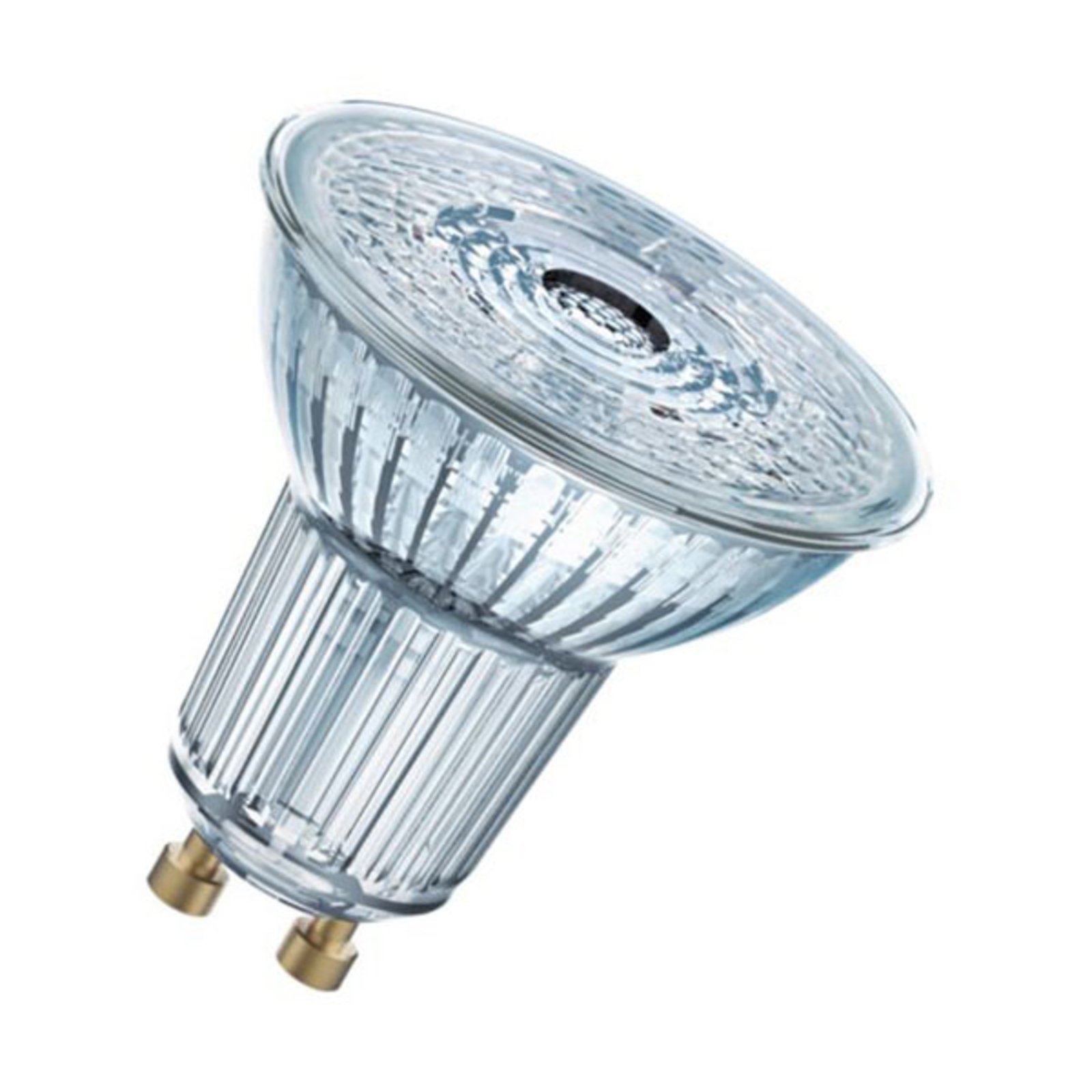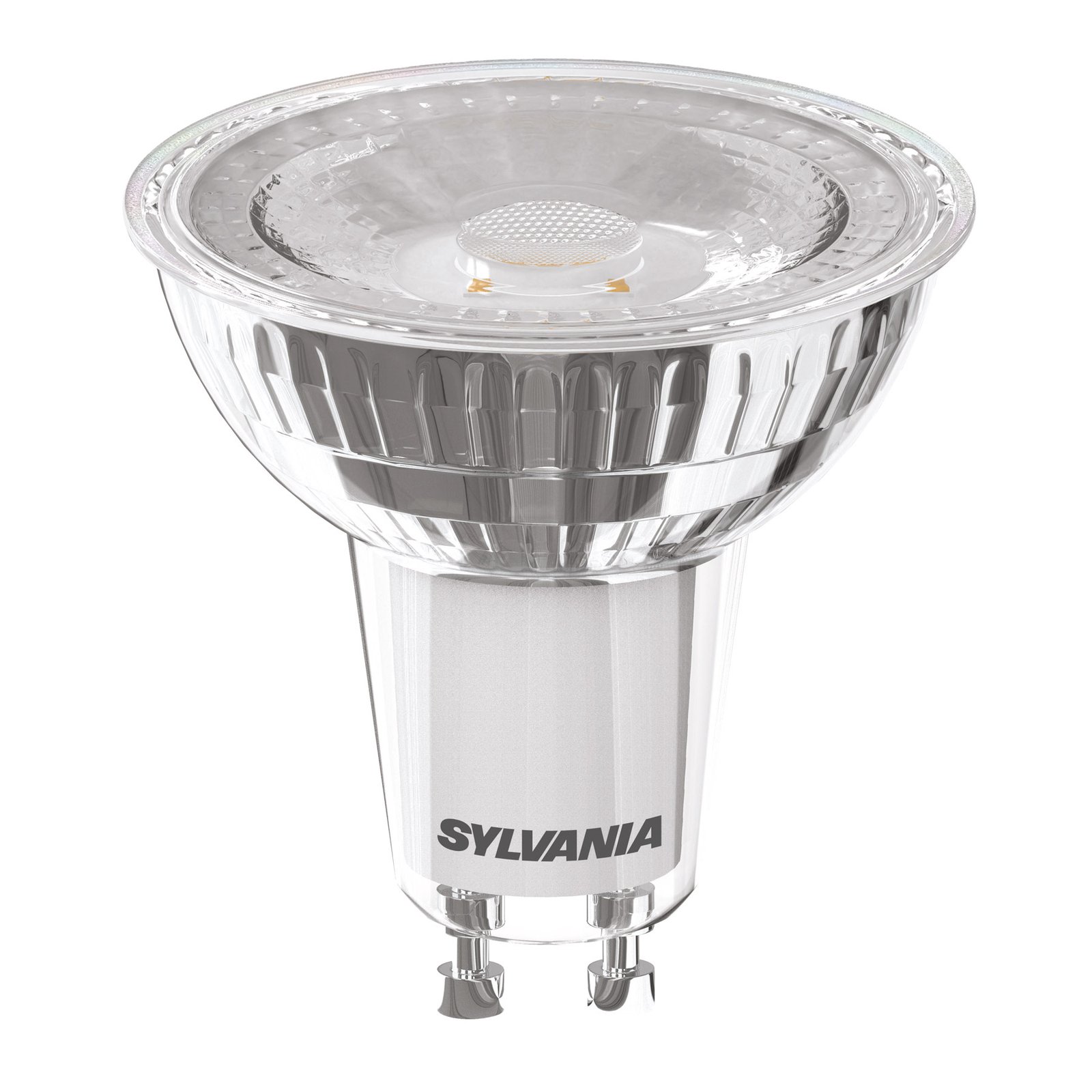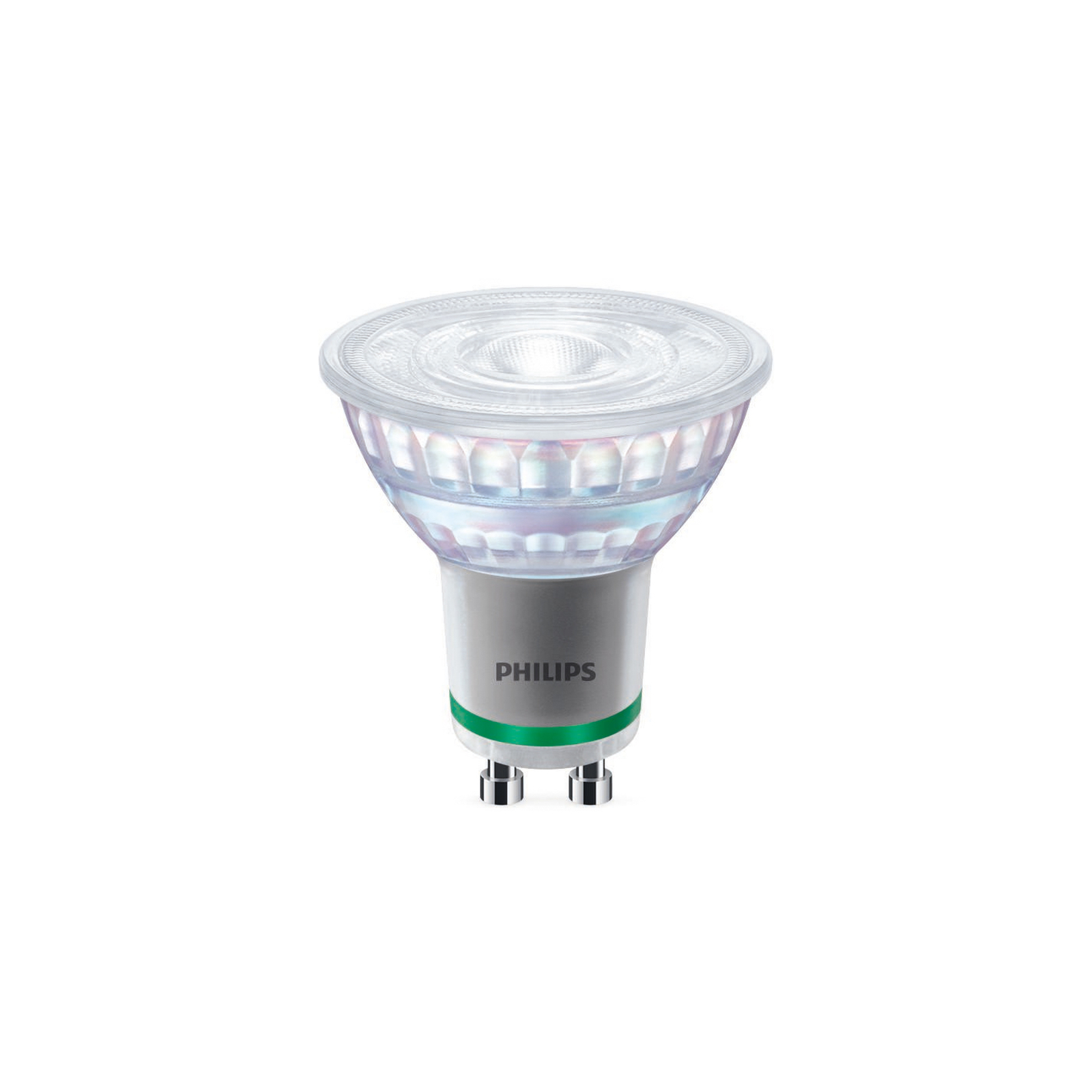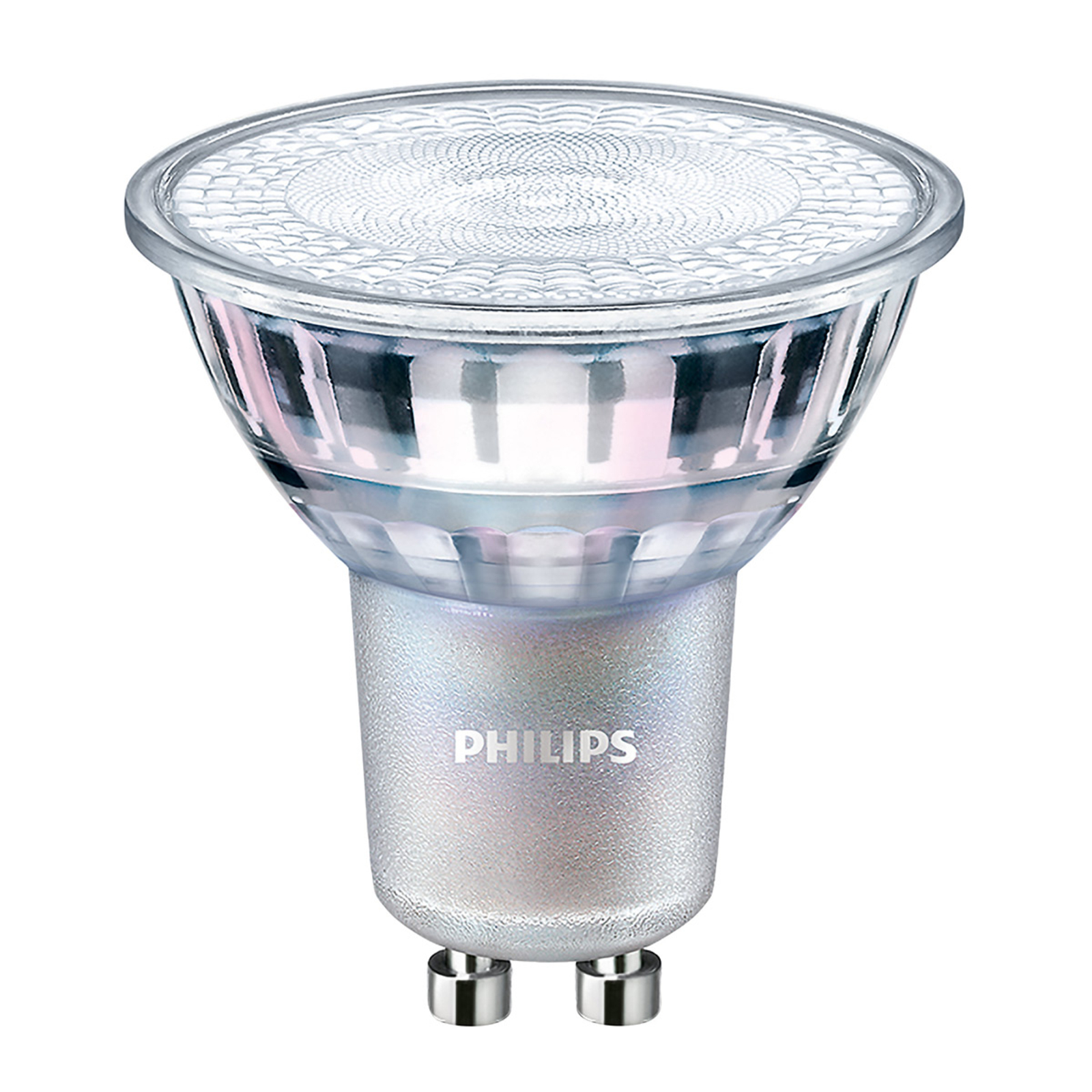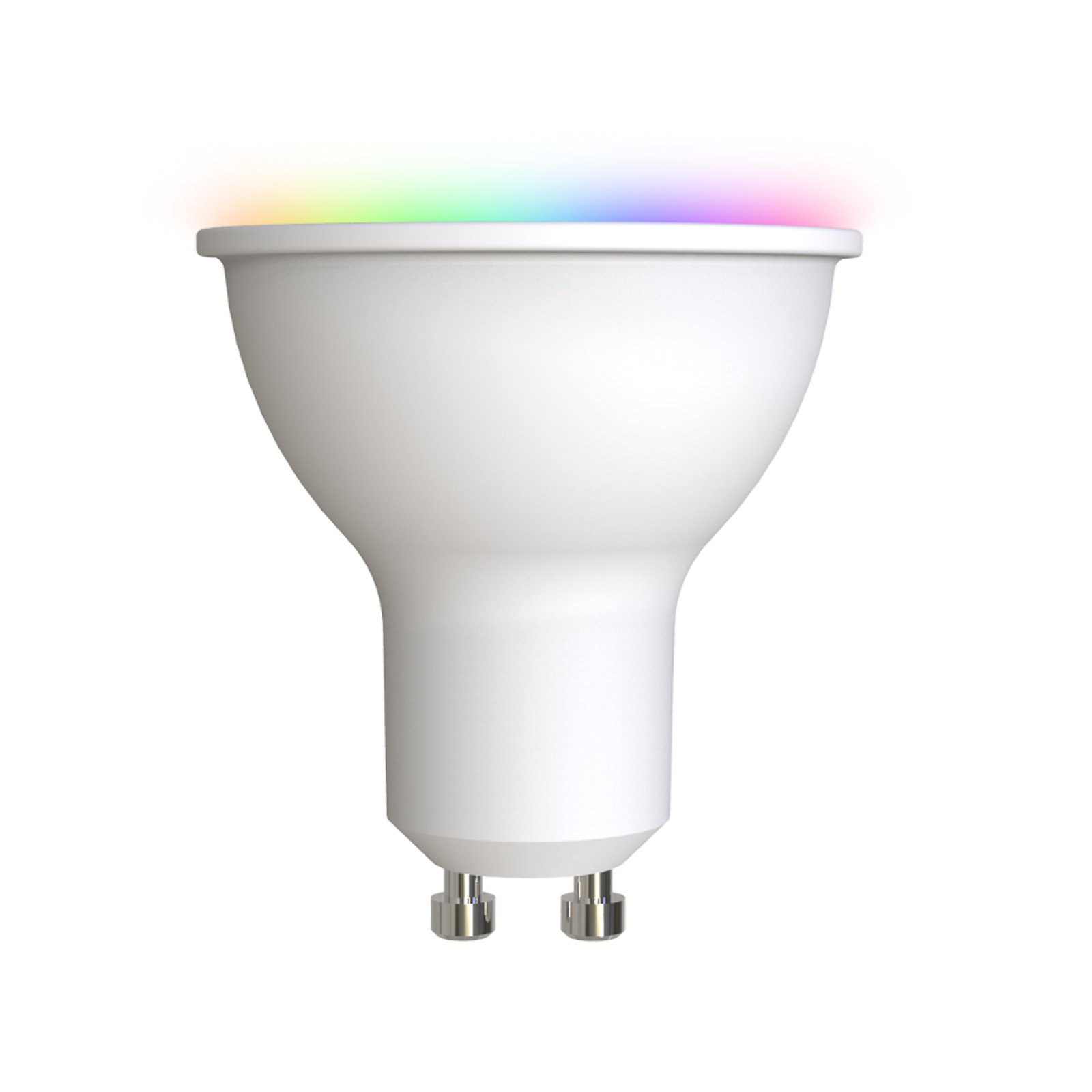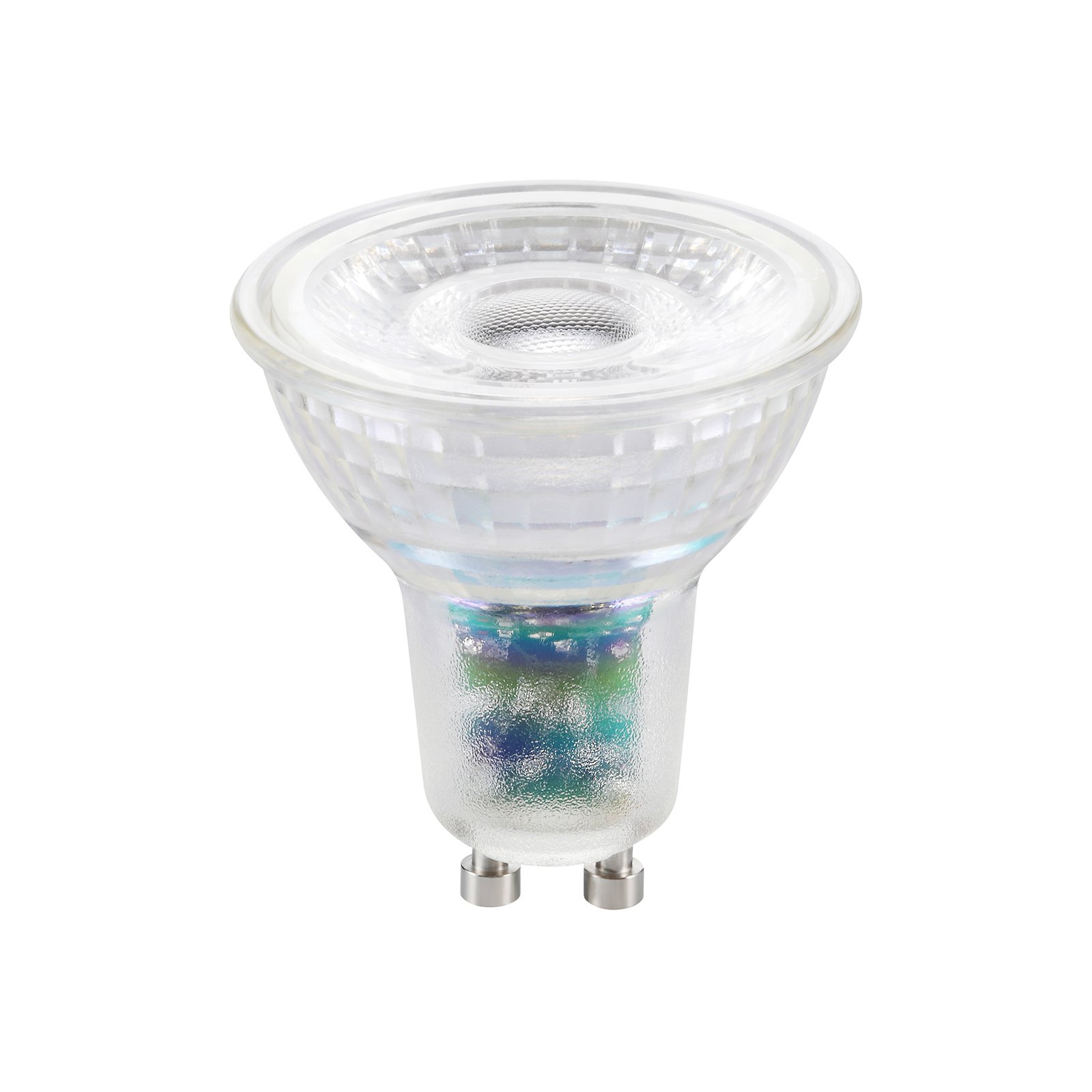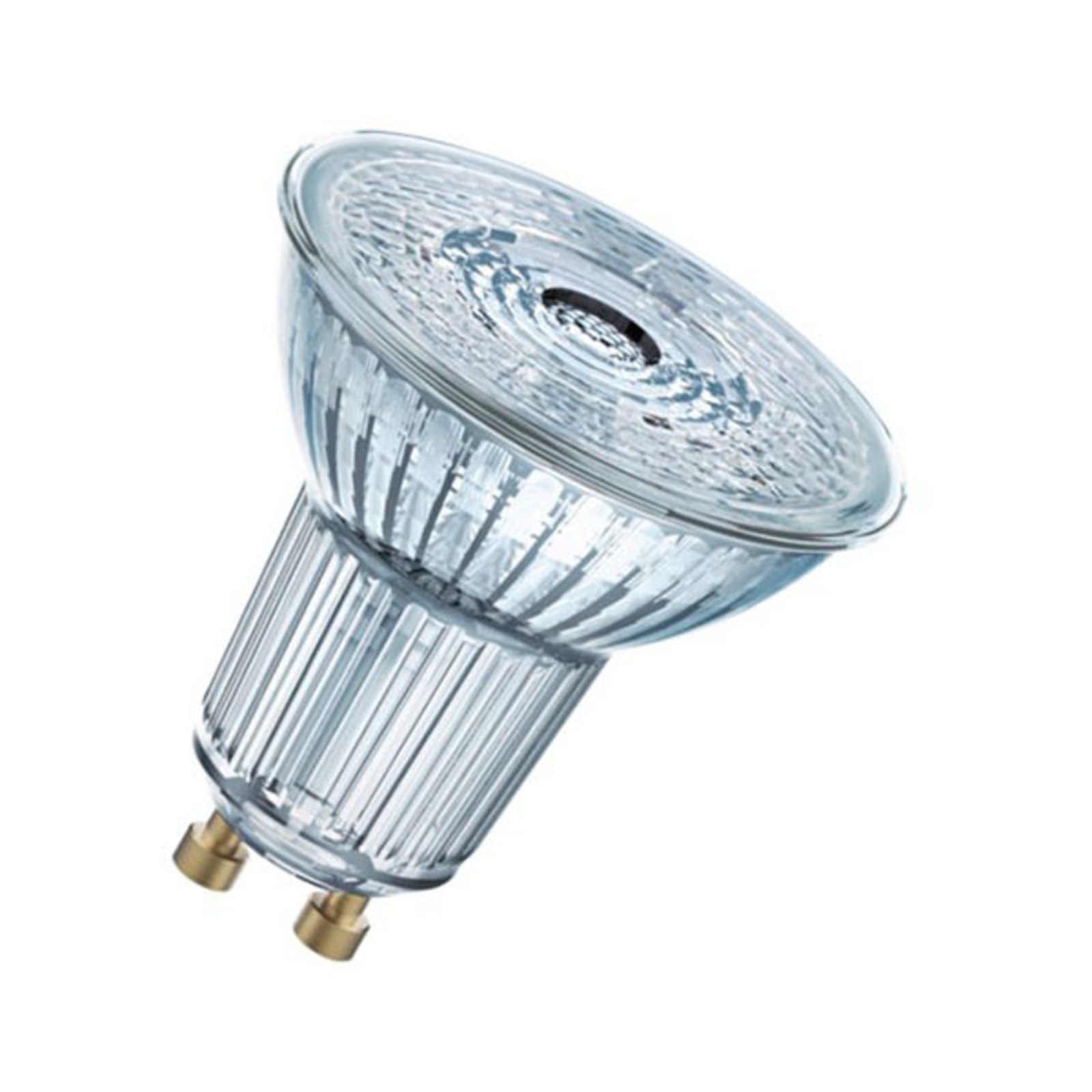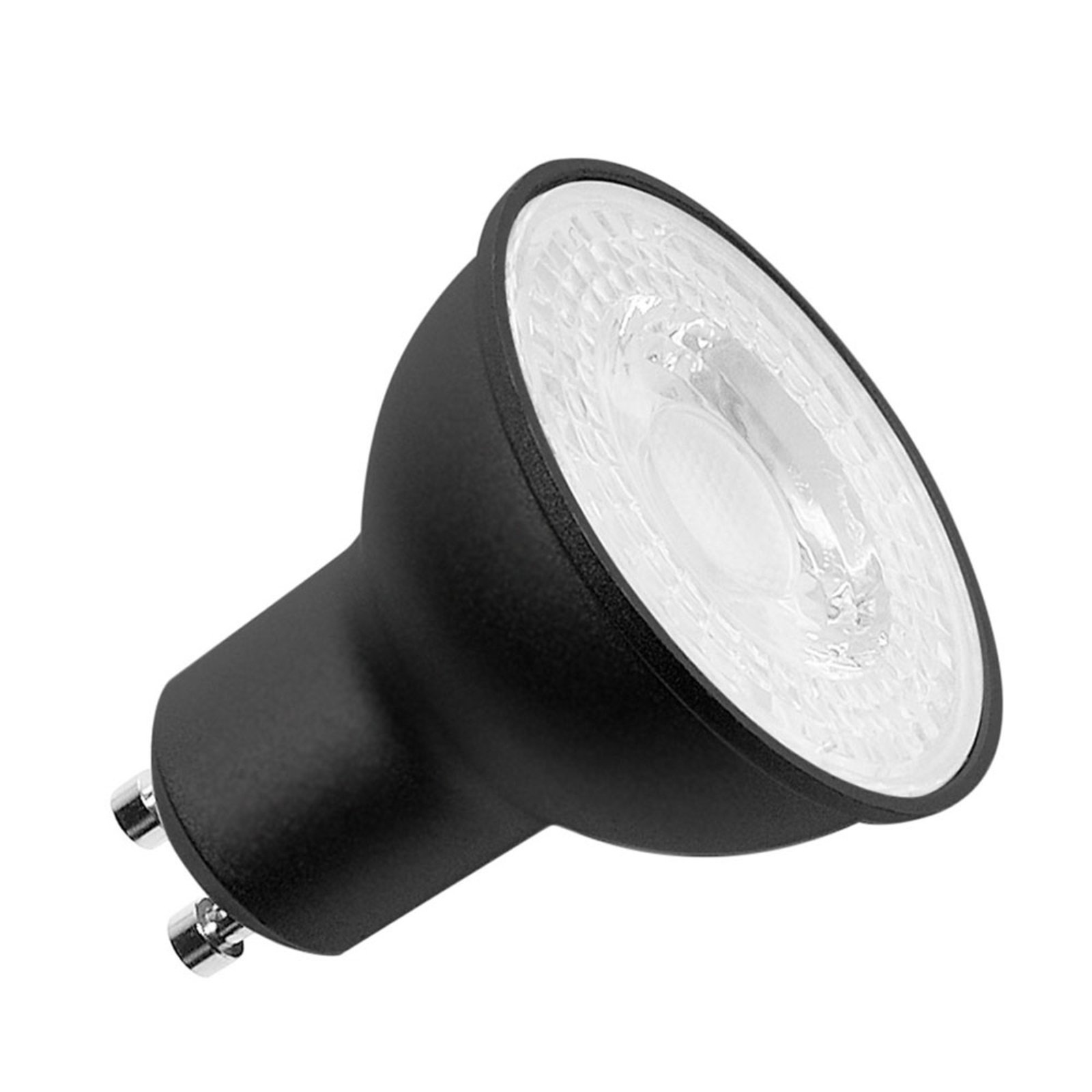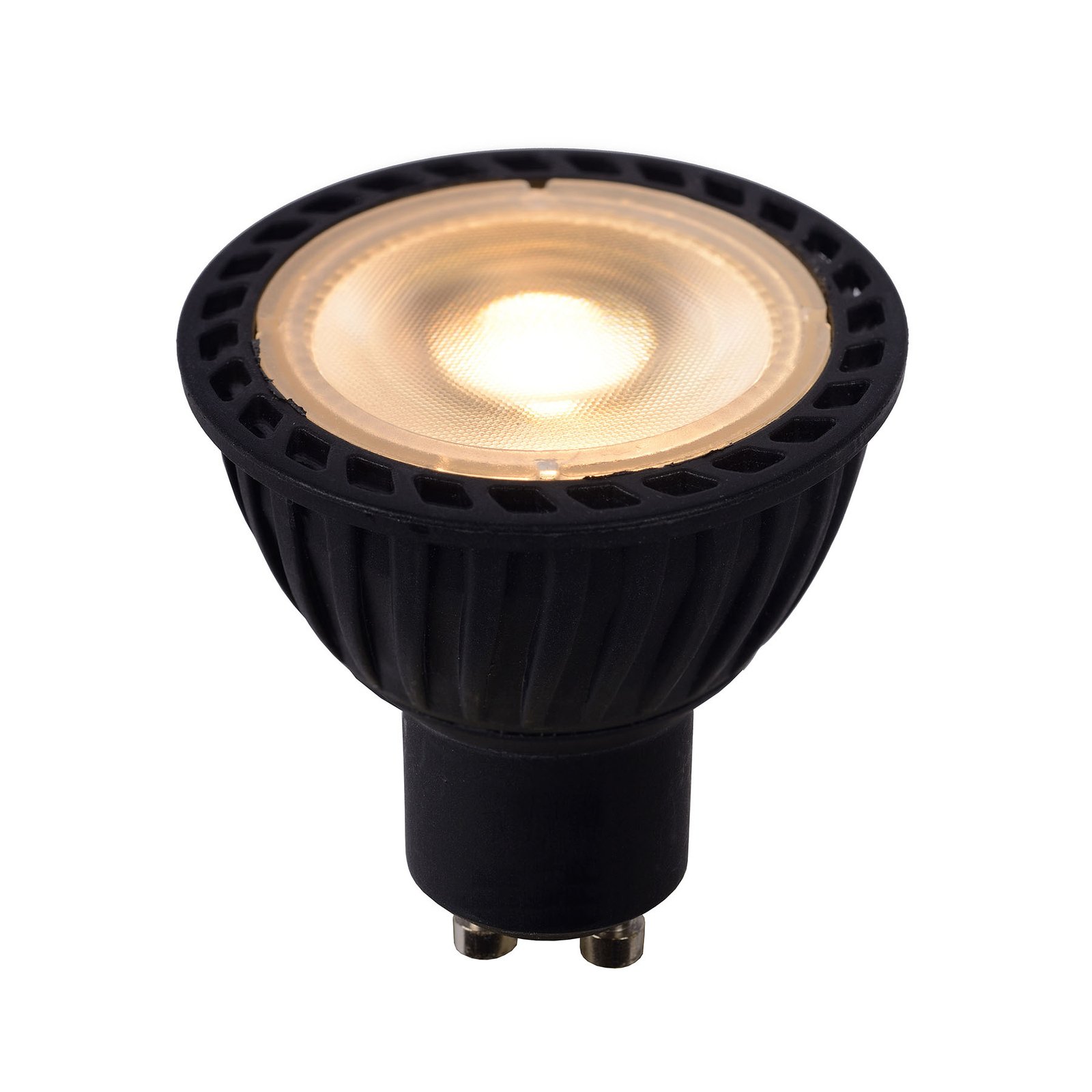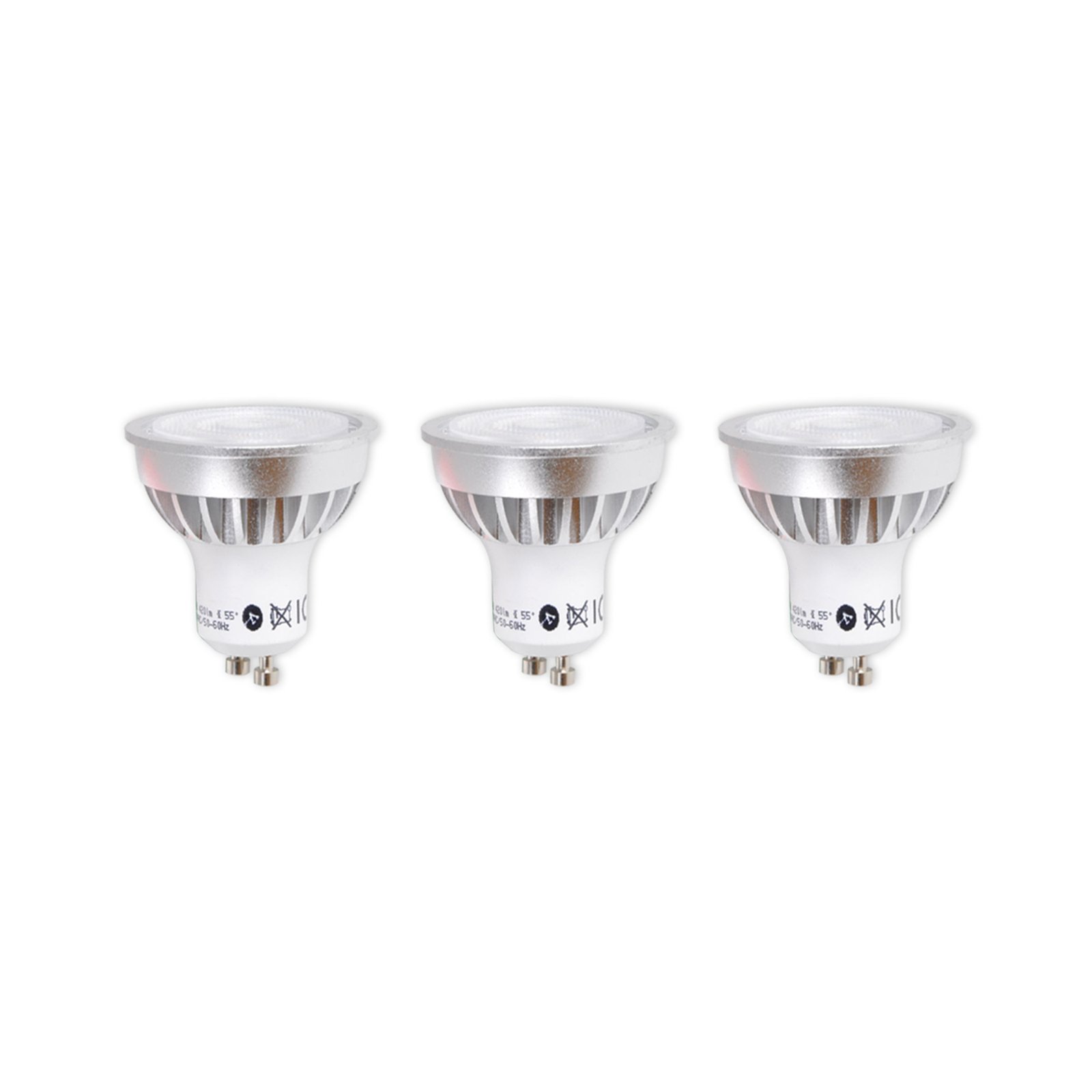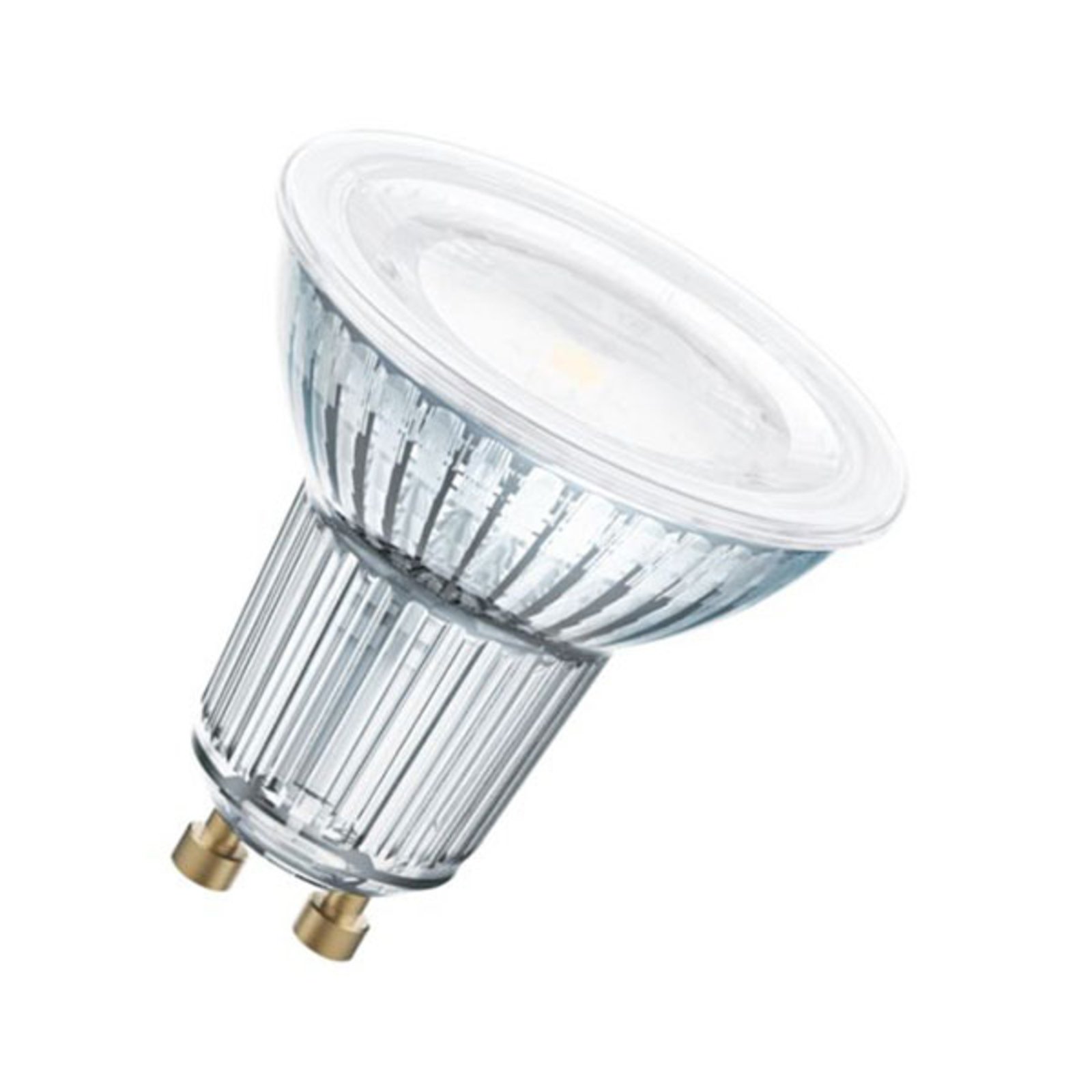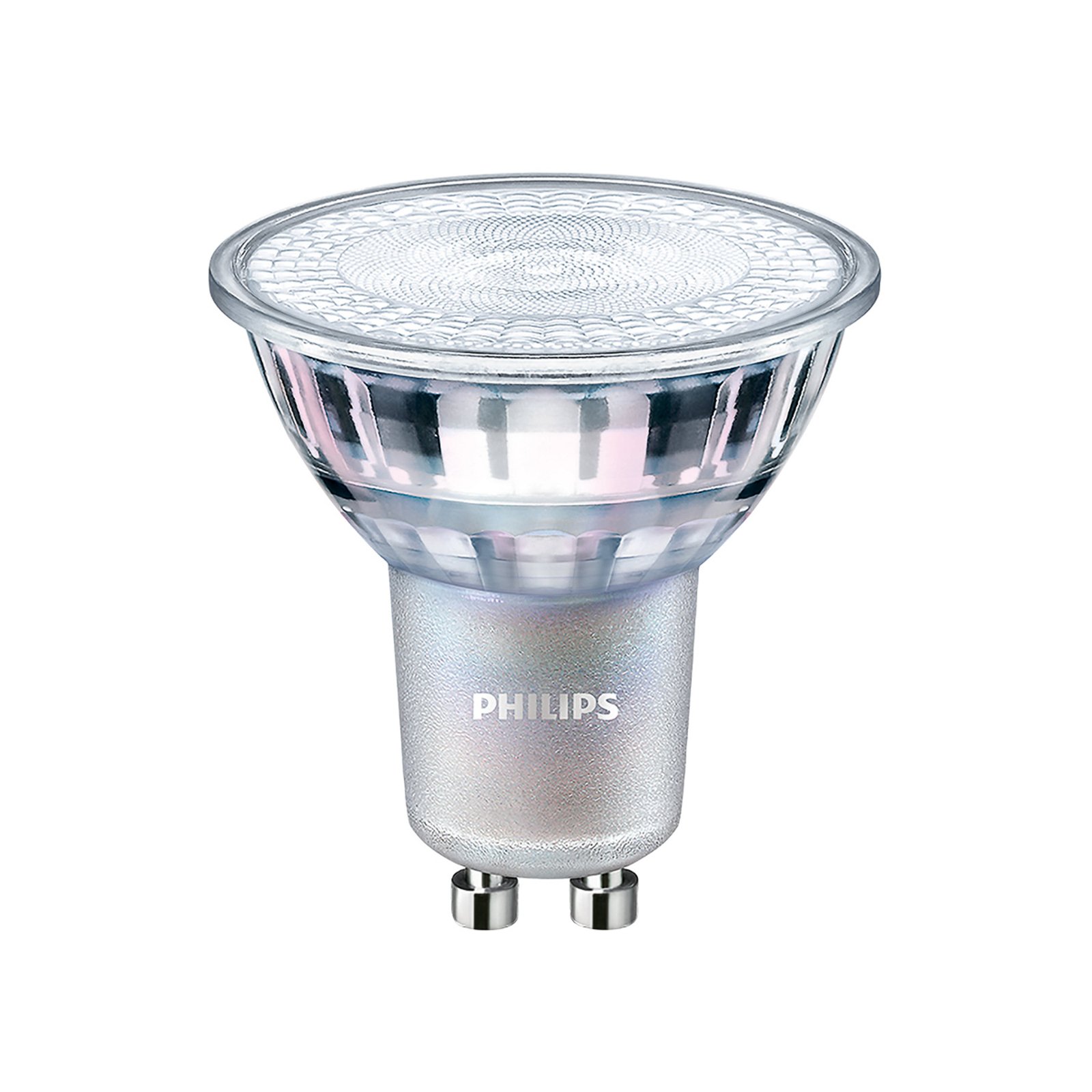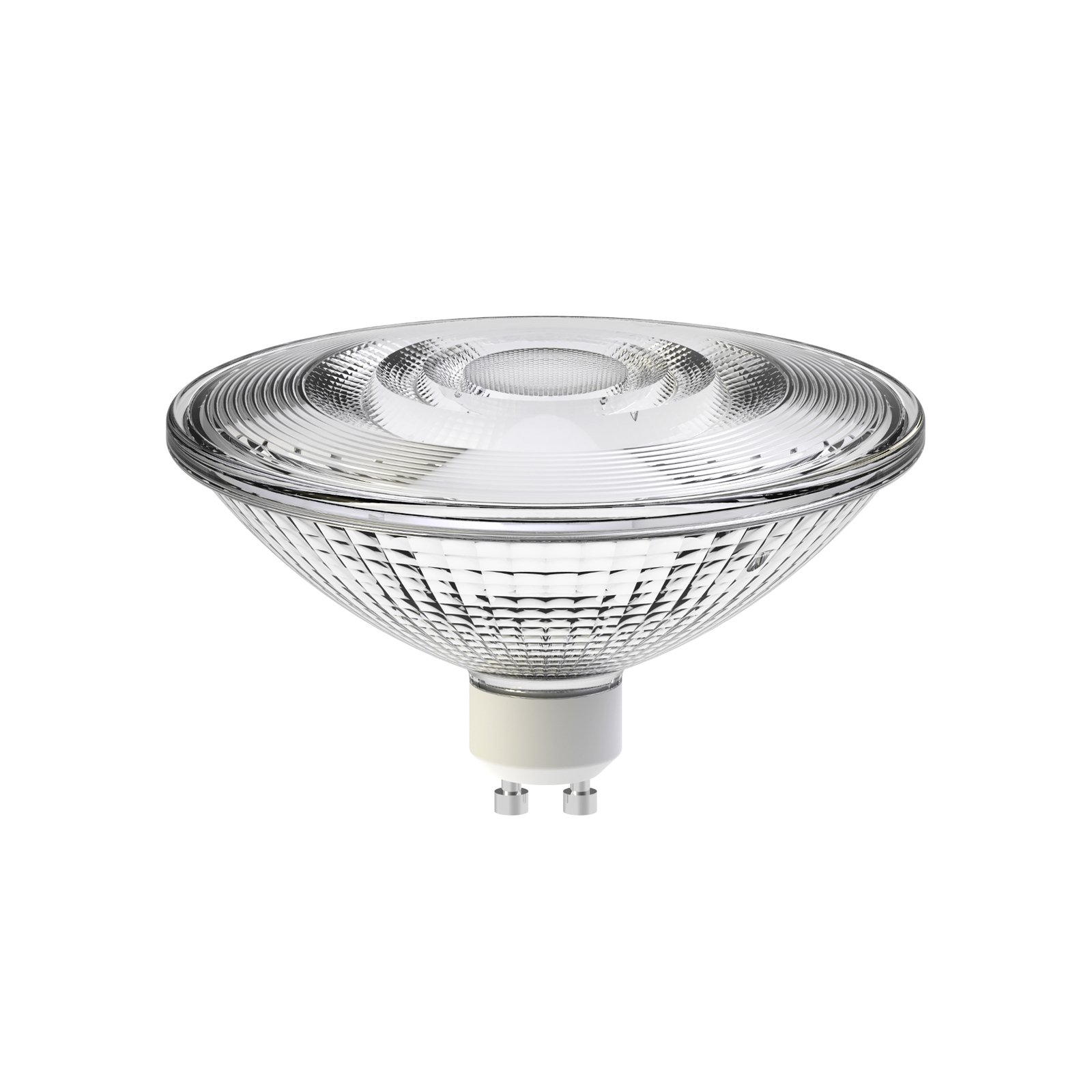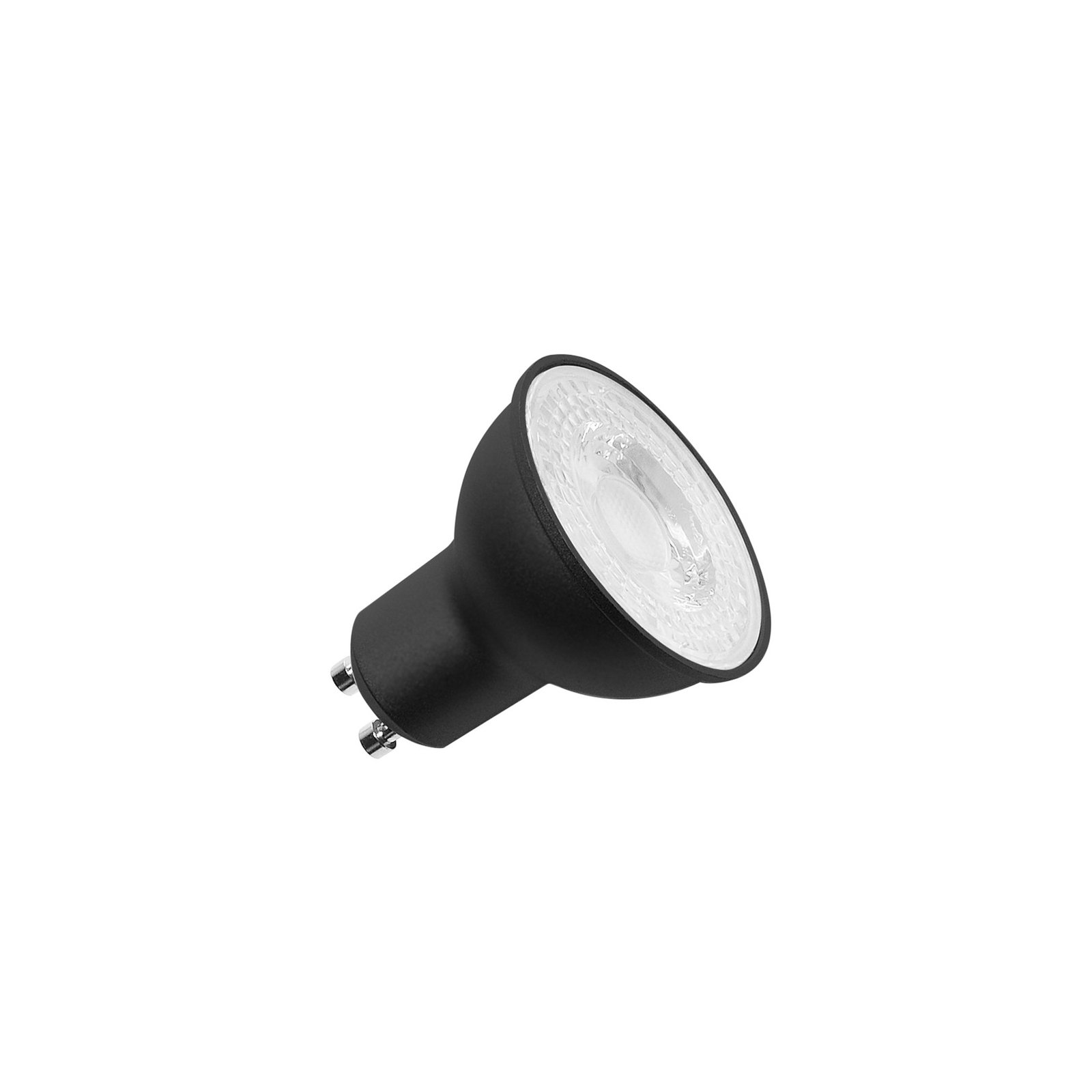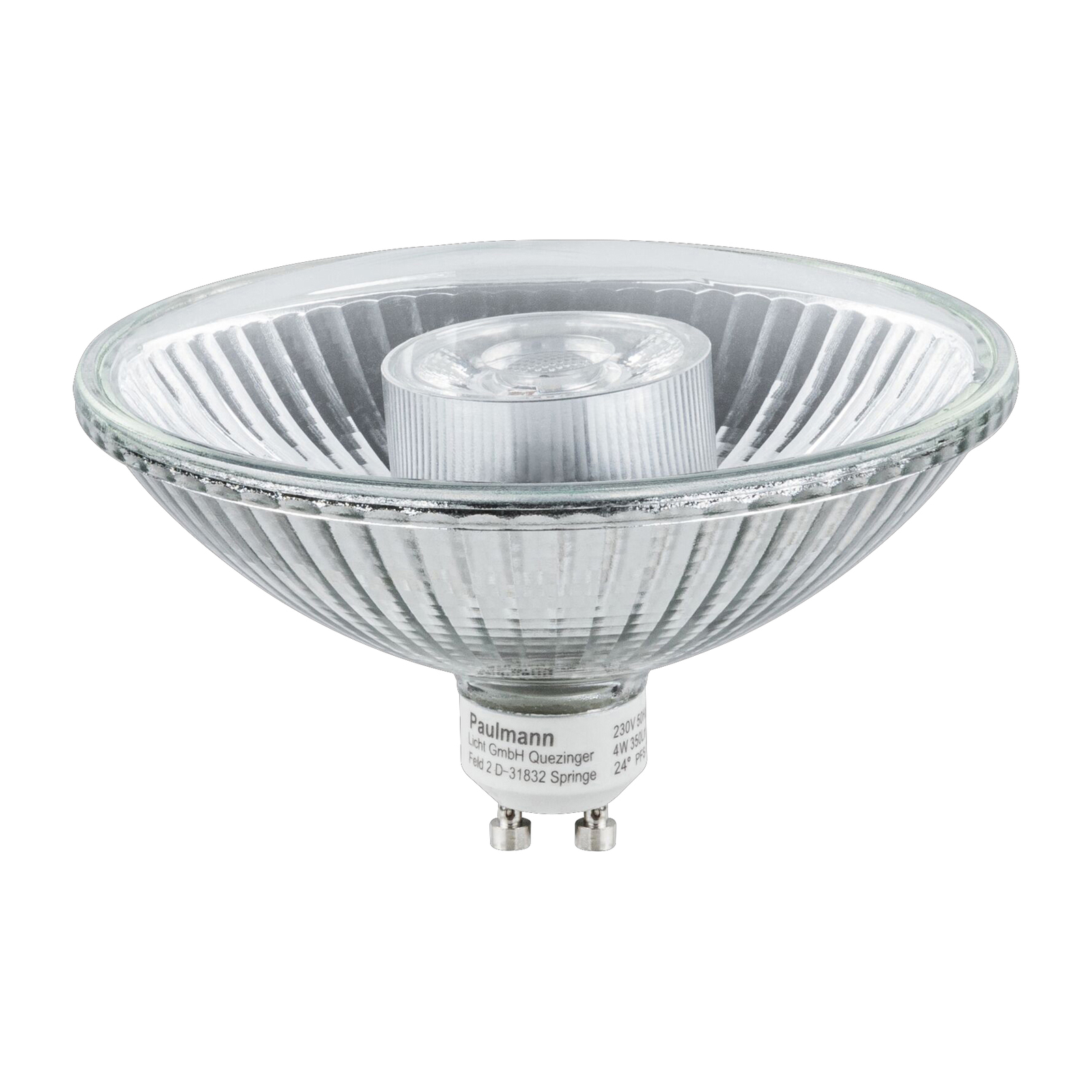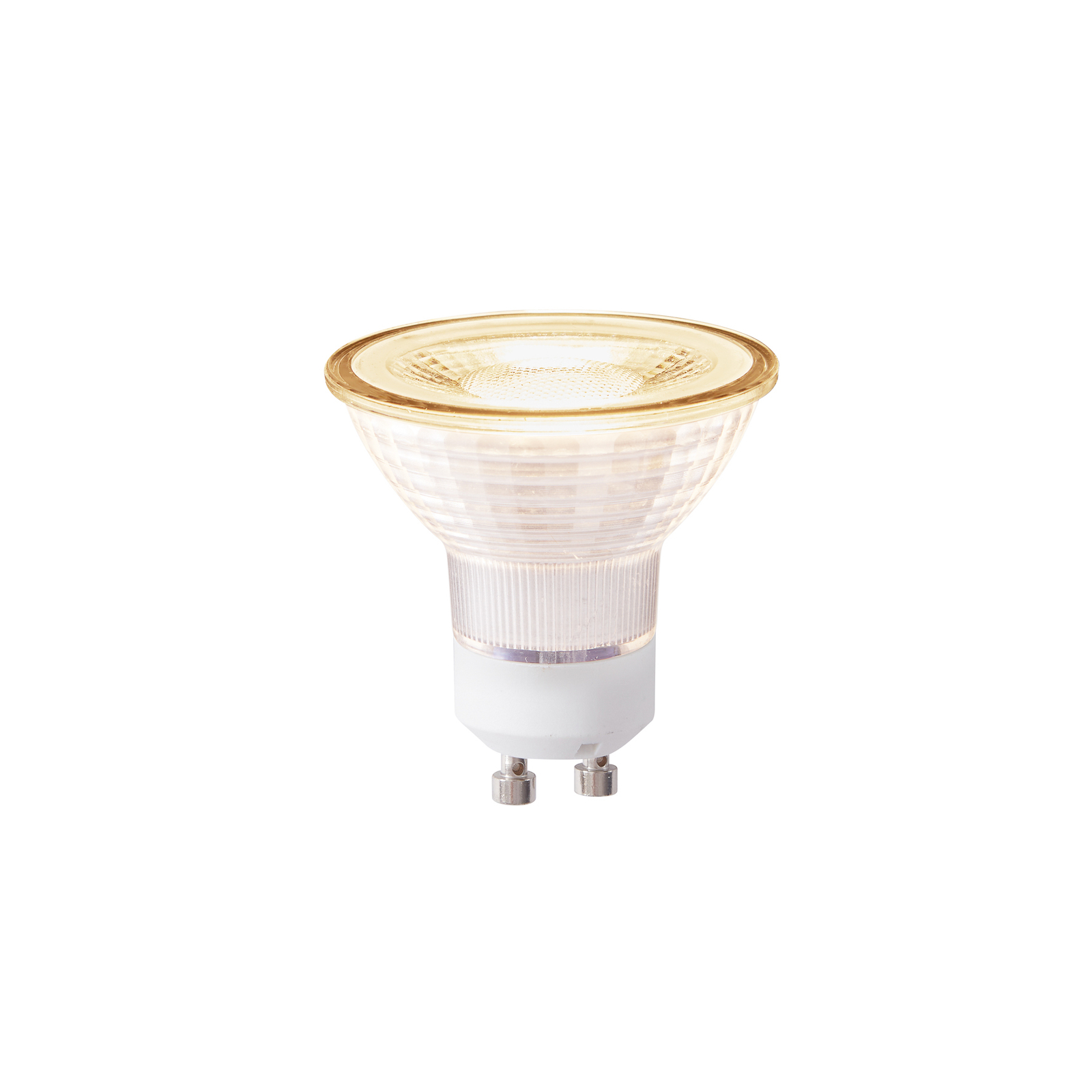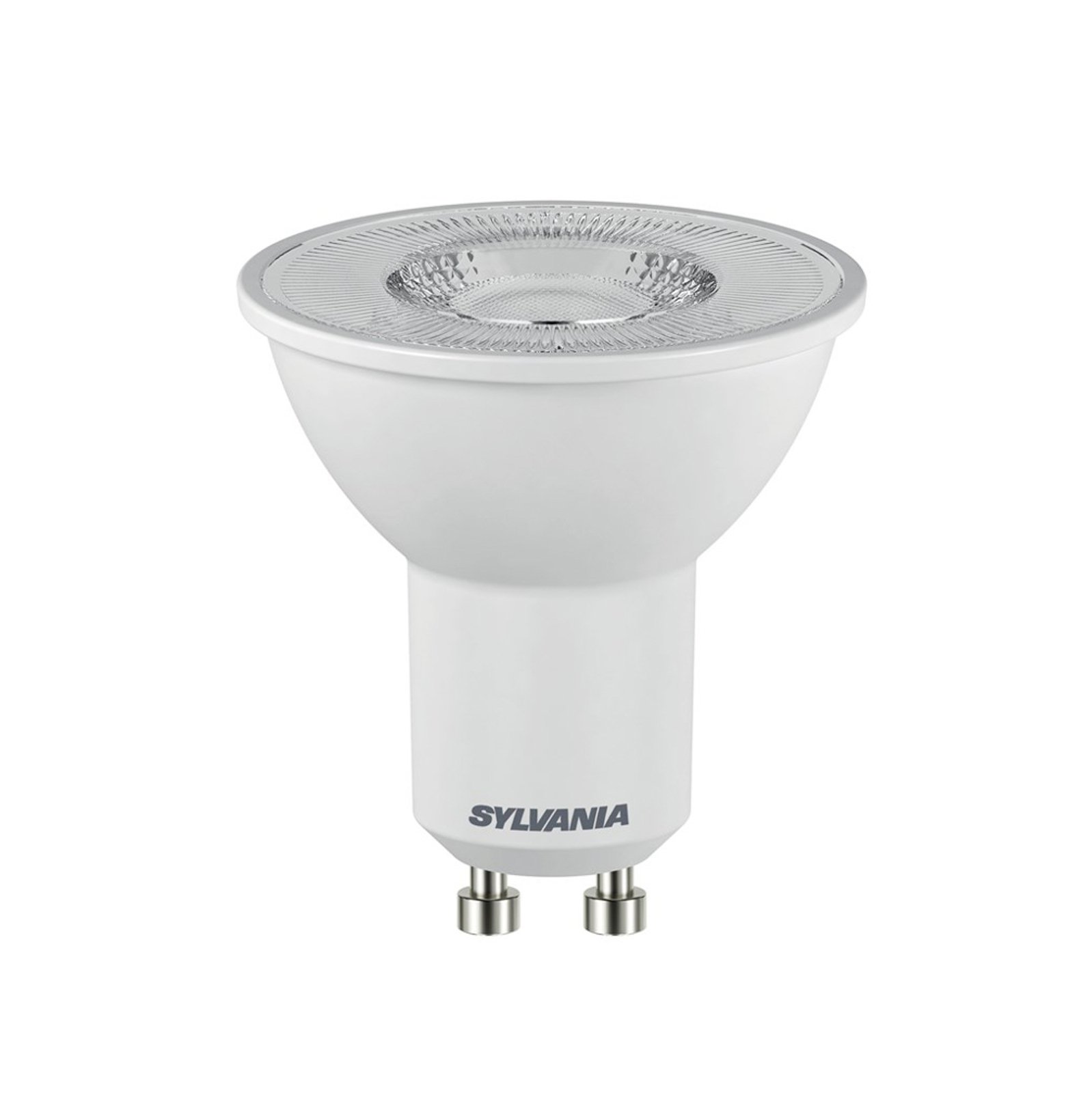- 50 days free returns
- Rated “Great” on Trustpilot
- Europe's largest selection of brands
Extra 10% off over €109 & Extra 13% off over €159
GU10 LED lamps
Revival thanks to energy efficiency and individual light
What are GU10 LED lamps?
GU10 LED lamps are the modern alternative to GU10 high-voltage halogen lamps. They retain their reflector lamp design even with the change to the new lighting technology. The standard pin spacing of 10 mm and the bayonet catch, where the pins of the pin base are inserted into the socket and turned slightly to secure them, are also retained. In addition, the GU10 halogen lamp was sometimes so widespread because it could be connected directly to 230 volts without a transformer. This is also the case with the LED alternative.
:format(jpeg))
GU10 LEDs are equipped with the same standardized base as GU10 halogen lamps.
:format(jpeg))
The GU10 LED is inserted into the socket like conventional GU10 lamps using a bayonet catch.
Where are GU10 LED light sources used?
GU10 LED is generally used for directional light indoors and outdoors due to its reflector characteristics. The widely used light source can be found in single or multi-flame ceiling and wall spotlights and track systems, as well as in table, floor and pendant lights. In outdoor areas, the light source is used for ground spike spotlights and wall lights alike. Similar to E27 or E14, GU10 is a socket for various types of lights.
:format(jpeg))
:format(jpeg))
:format(jpeg))
:format(jpeg))
Is it difficult to switch to LED lamps?
On the contrary, it is just as easy as replacing any other light source. The bulbs in all luminaires with sockets can be easily replaced with suitable LED bulbs**.
Do GU10 LEDs save costs?
GU10 LED lamps are not only a replacement for halogen lamps, but also an improvement. GU10 halogen lamps had a very short service life in comparison and required a lot of energy. Large quantities of heat were also generated.
LEDs, on the other hand, save a lot of energy and therefore also operating costs. An example: A halogen light source with a power consumption of 50 watts is replaced by an LED with - this varies depending on the product - around 5 watts, which represents a saving of 90 %, which pays off not only in private, but of course also in commercial use.
In addition, LEDs have a high service life and, like halogen lamps, achieve instant 100% brightness.
:format(jpeg))
:format(jpeg))
Are GU10 LED lamps glaring?
The perception of light that is too bright is either due to too high brightness or "wrong" light color. The basis for this prejudice is the large selection of different GU10 LED lamps. This selection is made to make the light source suitable for different applications and is a major advantage over halogen lamps.
What you should look out for when buying:
- the brightness in lumen
- the light color in Kelvin
- the beam angle, if applicable
As LEDs consume less energy (watts) to produce the same brightness as a halogen bulb, watts is no longer suitable as a comparative value. Choosing as many watts as possible for LEDs can therefore lead to harsh light.
In terms of light color, we are used to a warm white light with halogen lamps - other light colors often seem too "cold" or "bright" to us. To ensure that the GU10 LED creates the right lighting ambience, we pay attention to the color temperature of the light source when purchasing:
- Warm white (with a color temperature of less than 3,300 Kelvin) for living spaces
- Universal white (between 3,300 and 5,300 Kelvin color temperature) for the home office, for example
- Daylight (more than 5,300 Kelvin color temperature) for cellar rooms, for example
The beam angle of GU10 reflector lamps varies from product to product, as both narrow and wide beam light is possible with GU10 lamps. When purchasing, therefore, select a comparable beam angle, e.g. 40°.
Are there smart GU10 LED light bulbs?
LED is the only lighting technology with which smart light sources are possible. There are also more and more smart light sources among GU10 LED lamps that can be integrated into the smart home and thus controlled via smartphone (e.g. from Philips Hue).
Depending on the product, users enjoy a changeable color temperature so that they can use the same light source for working or living.
In addition, smart light sources can usually be dimmed in brightness and often also perform a colorful color change. The high switching stability of the LED does not affect the service life even if these functions are used frequently.
:format(jpeg))
The strike-through prices correspond to the manufacturer's RRP.
Included in the price of LED lights/bulbs is a contribution to recycling costs of €0.05. Included in the price of CFLs/fluorescent bulbs is a contribution to recycling costs of €0.15.
All prices include 23% VAT, delivery costs excluded.










































